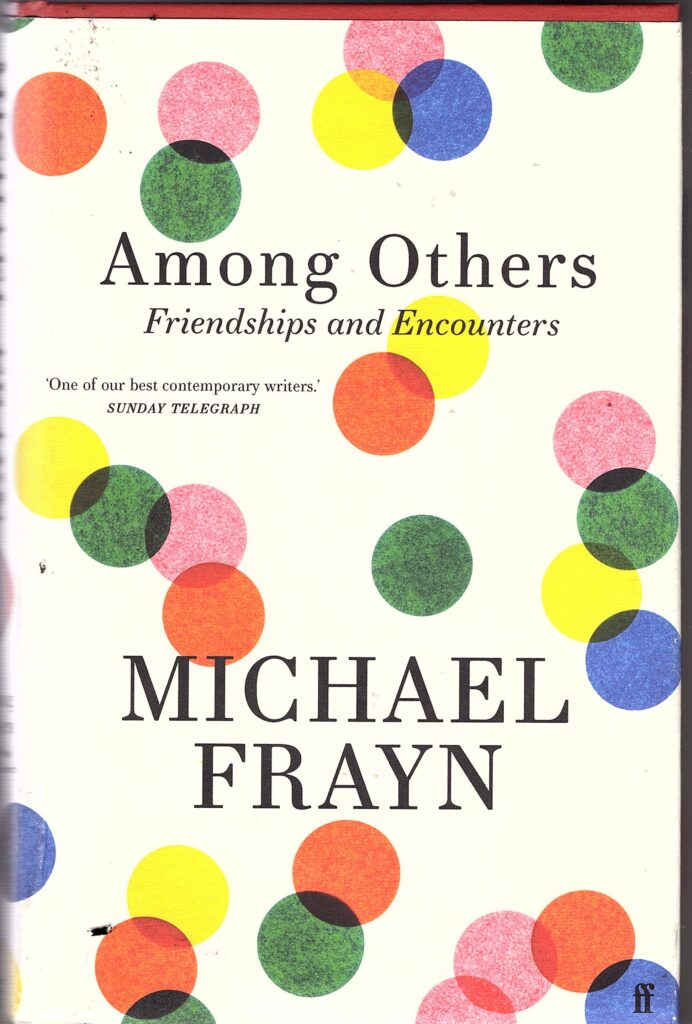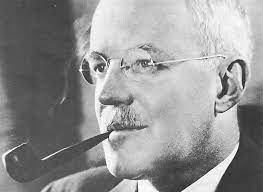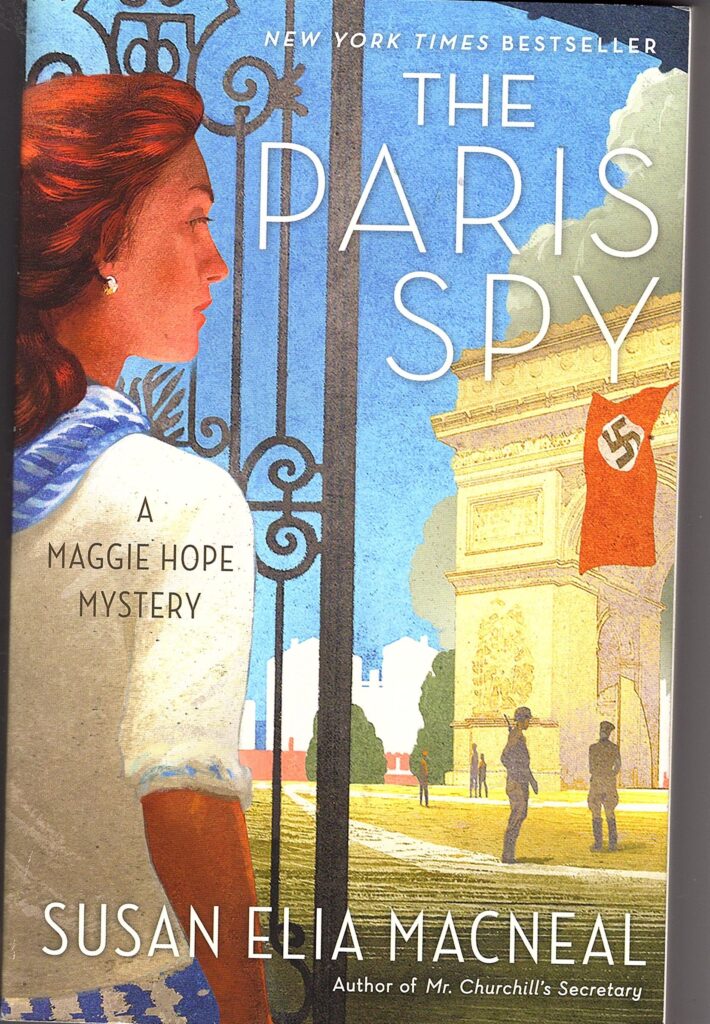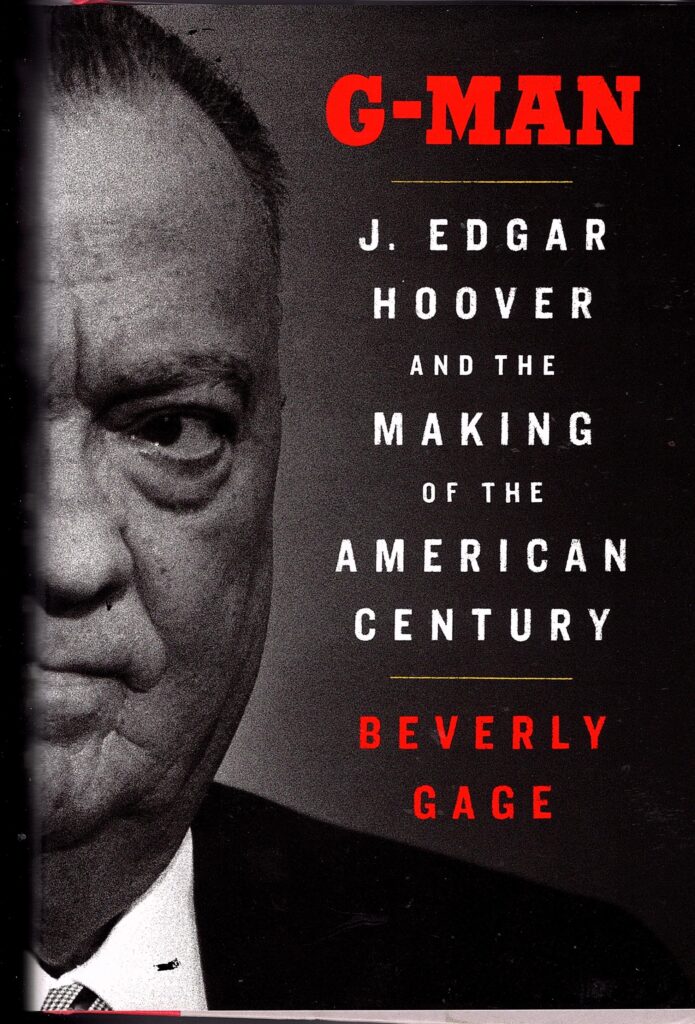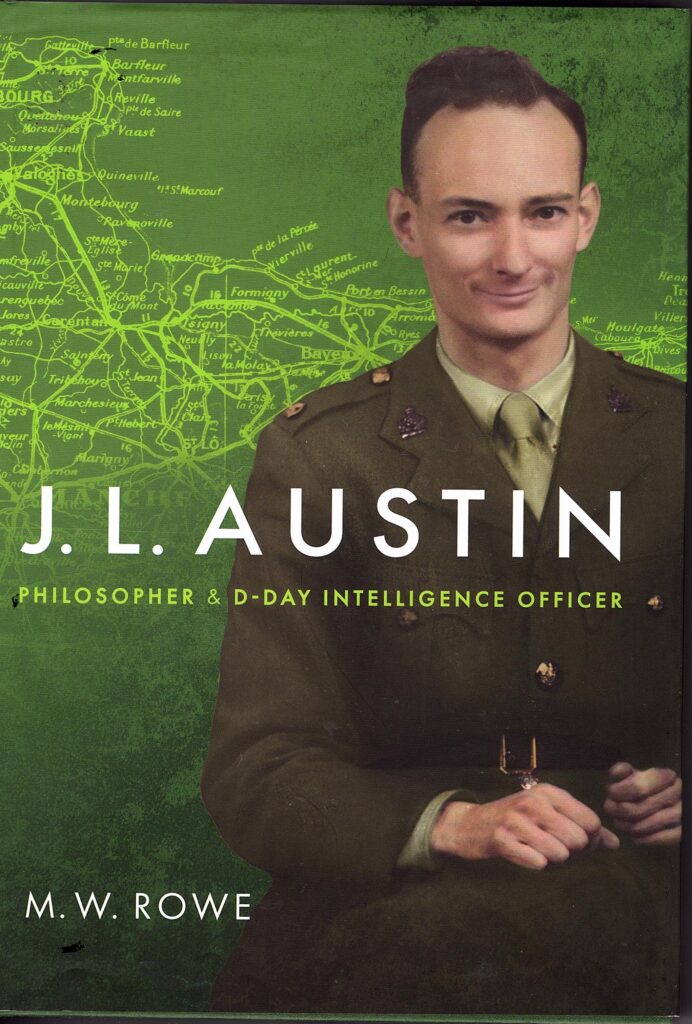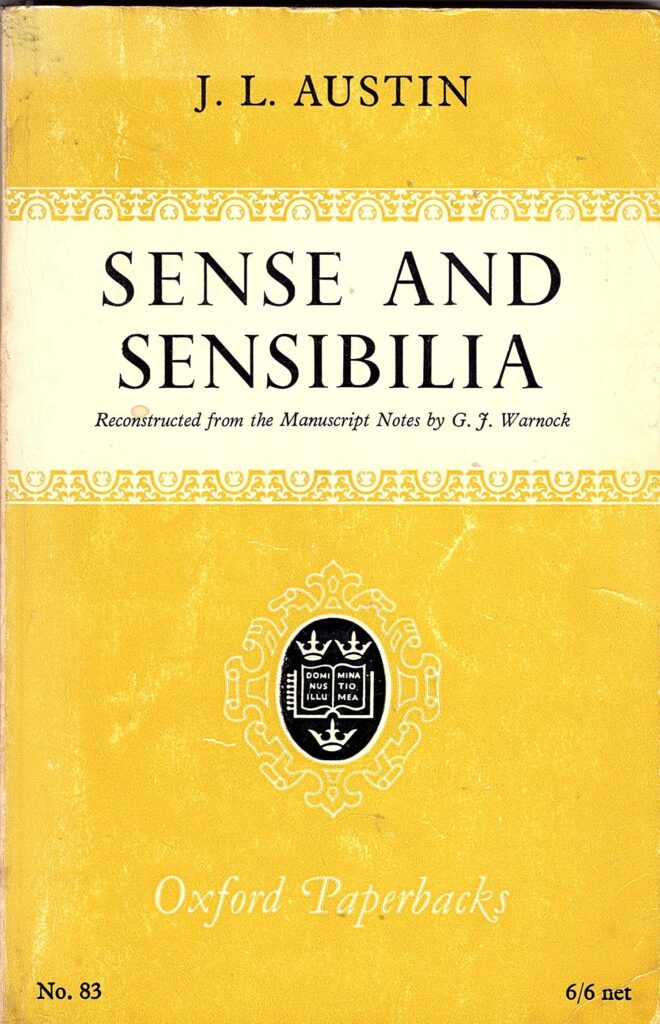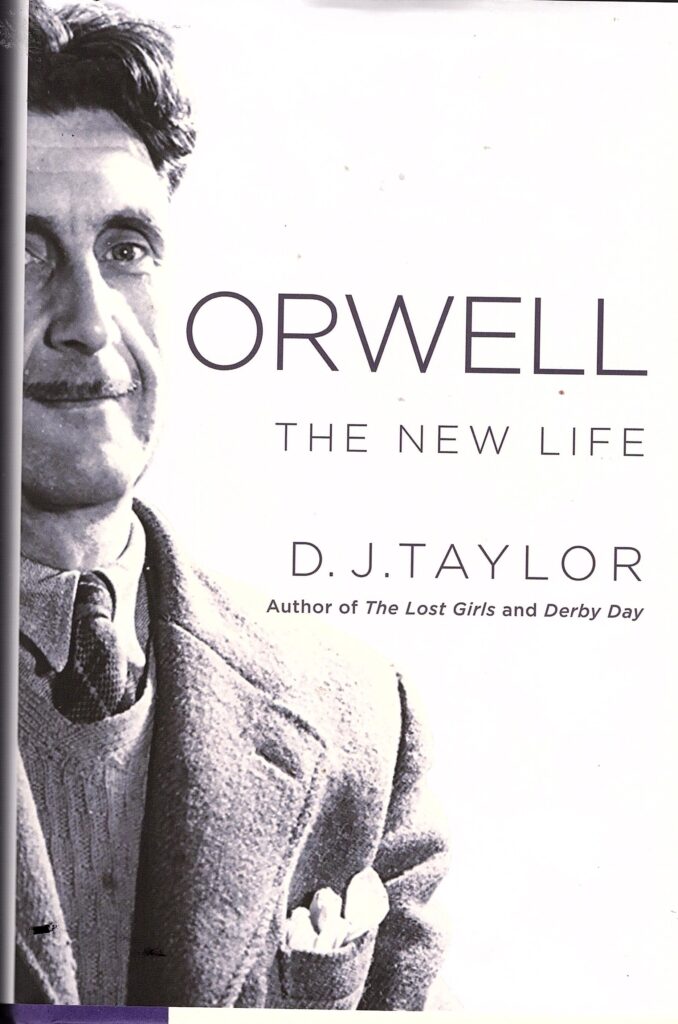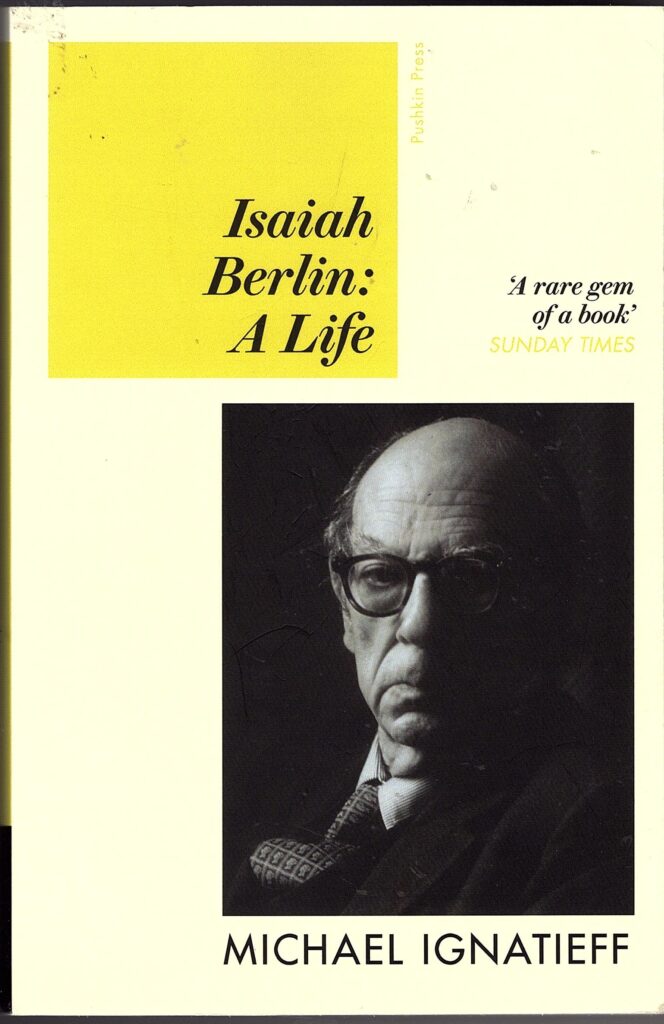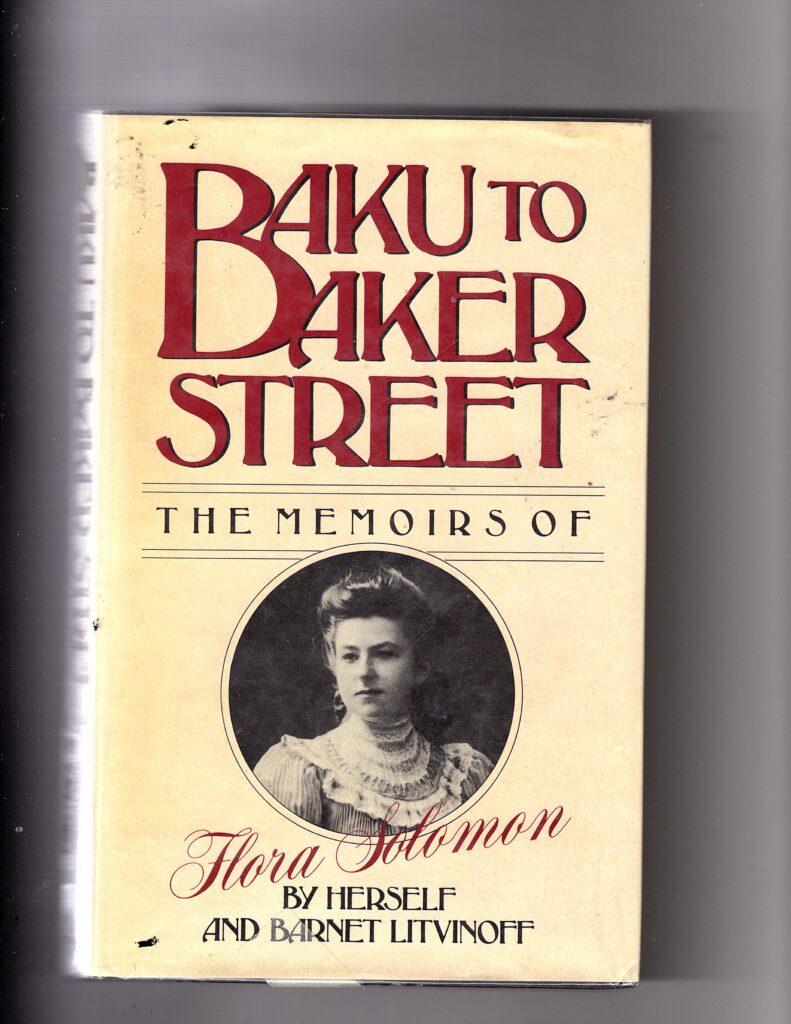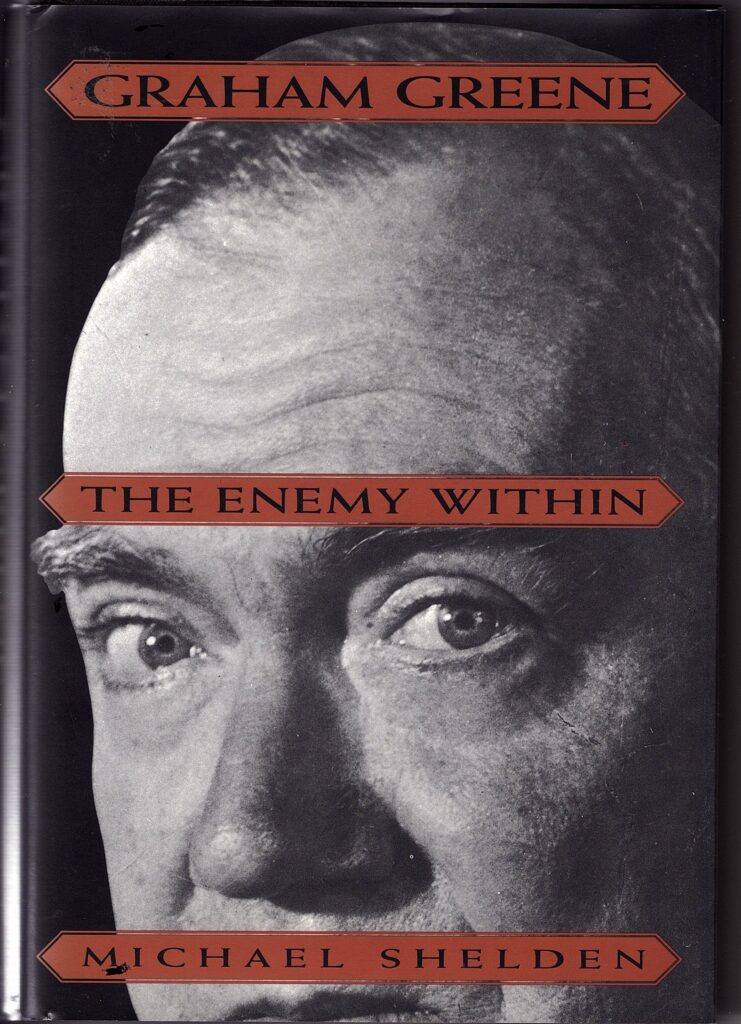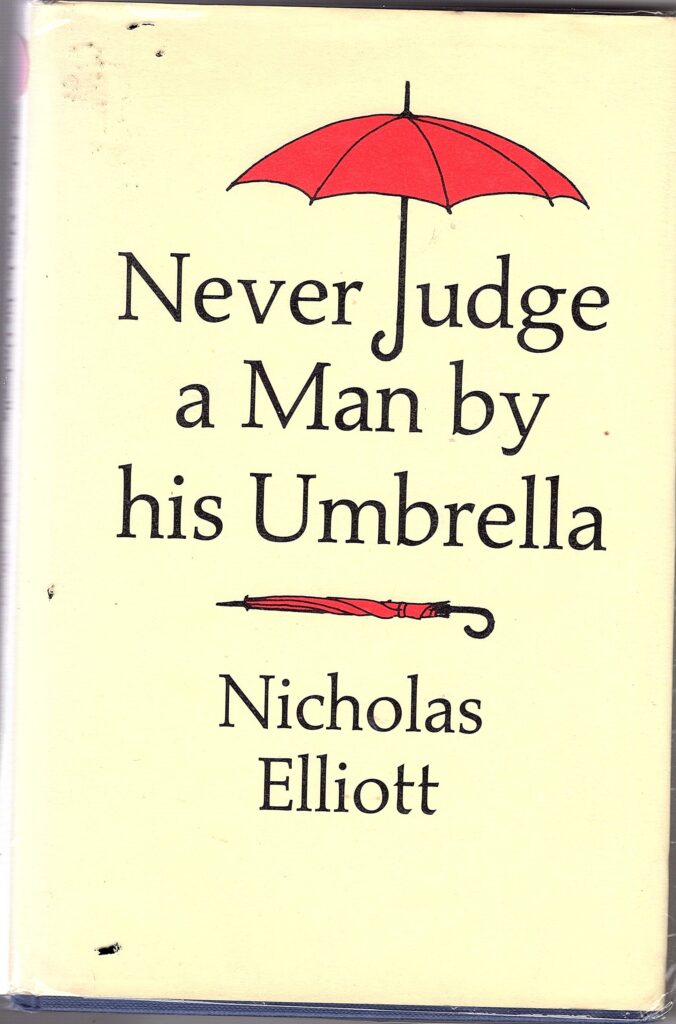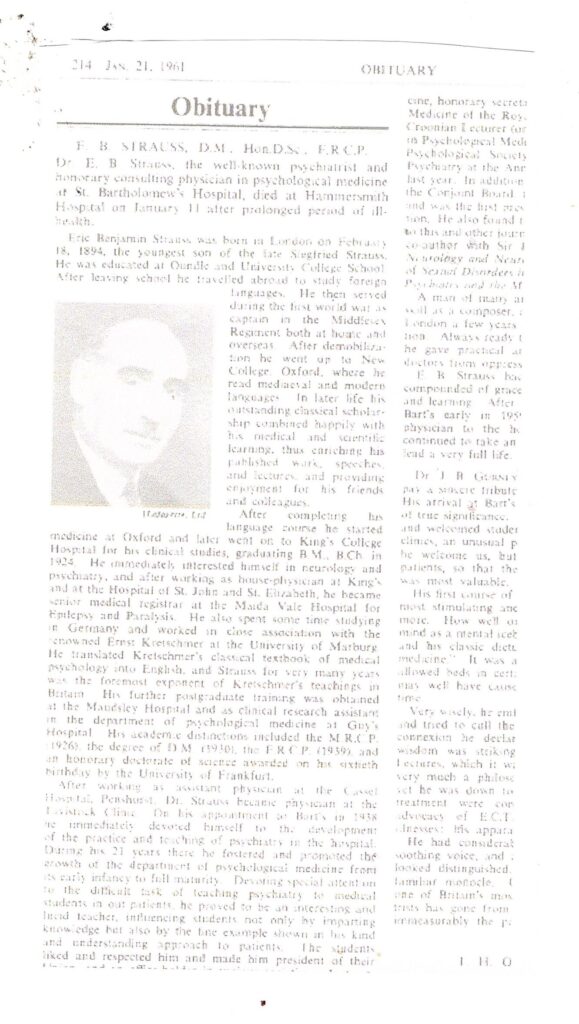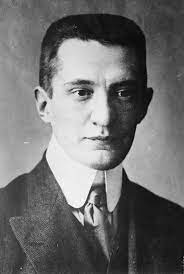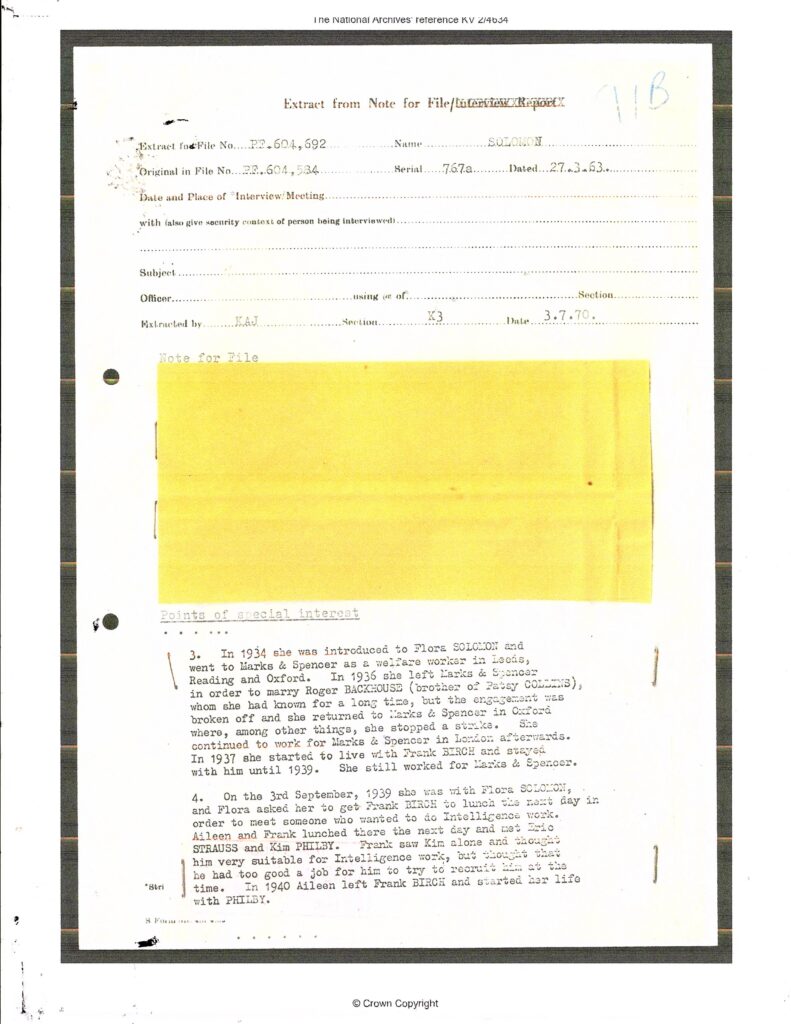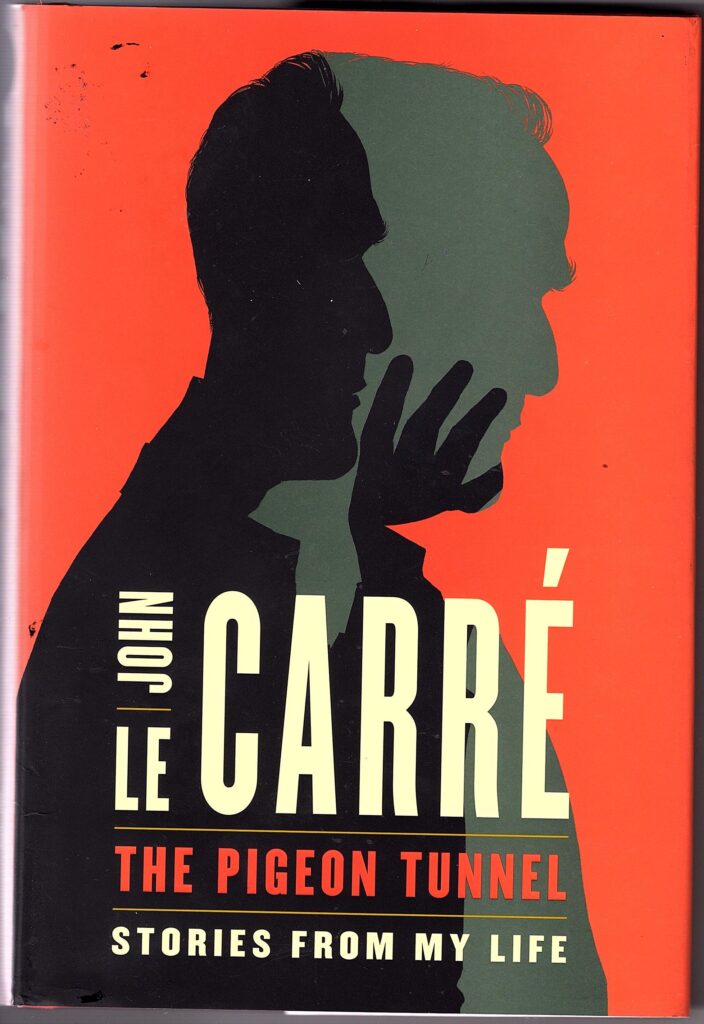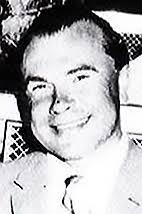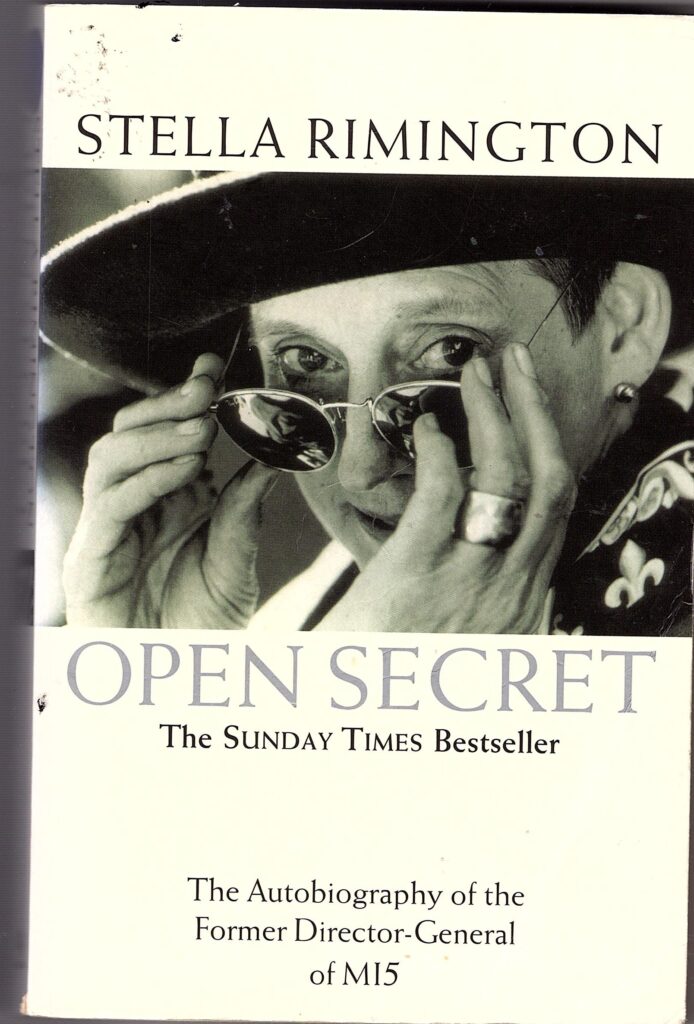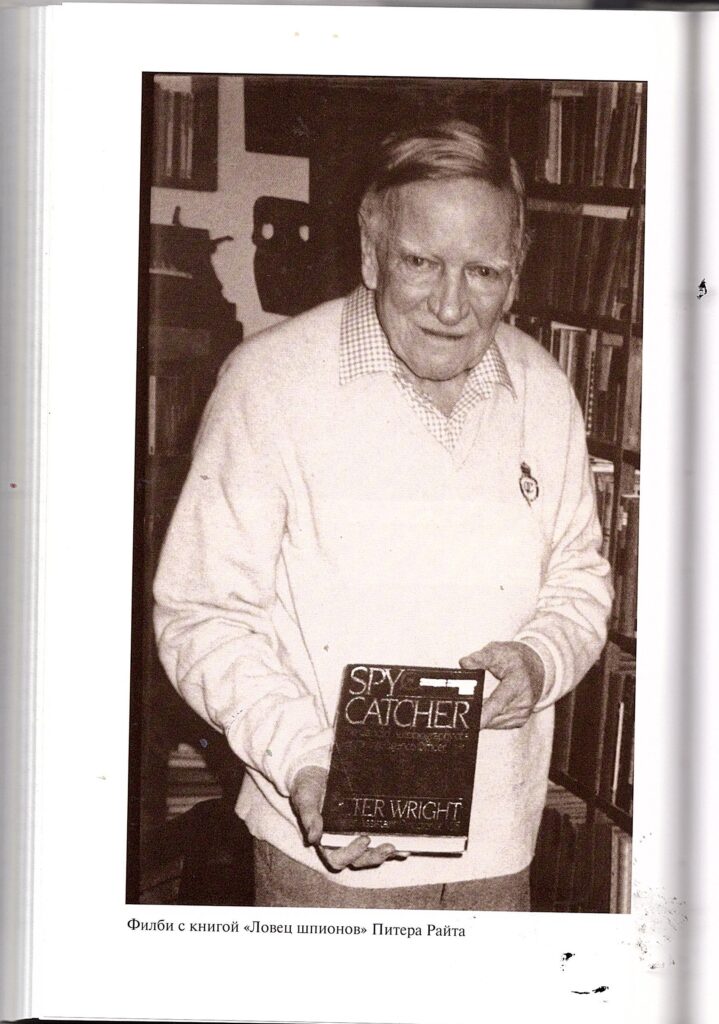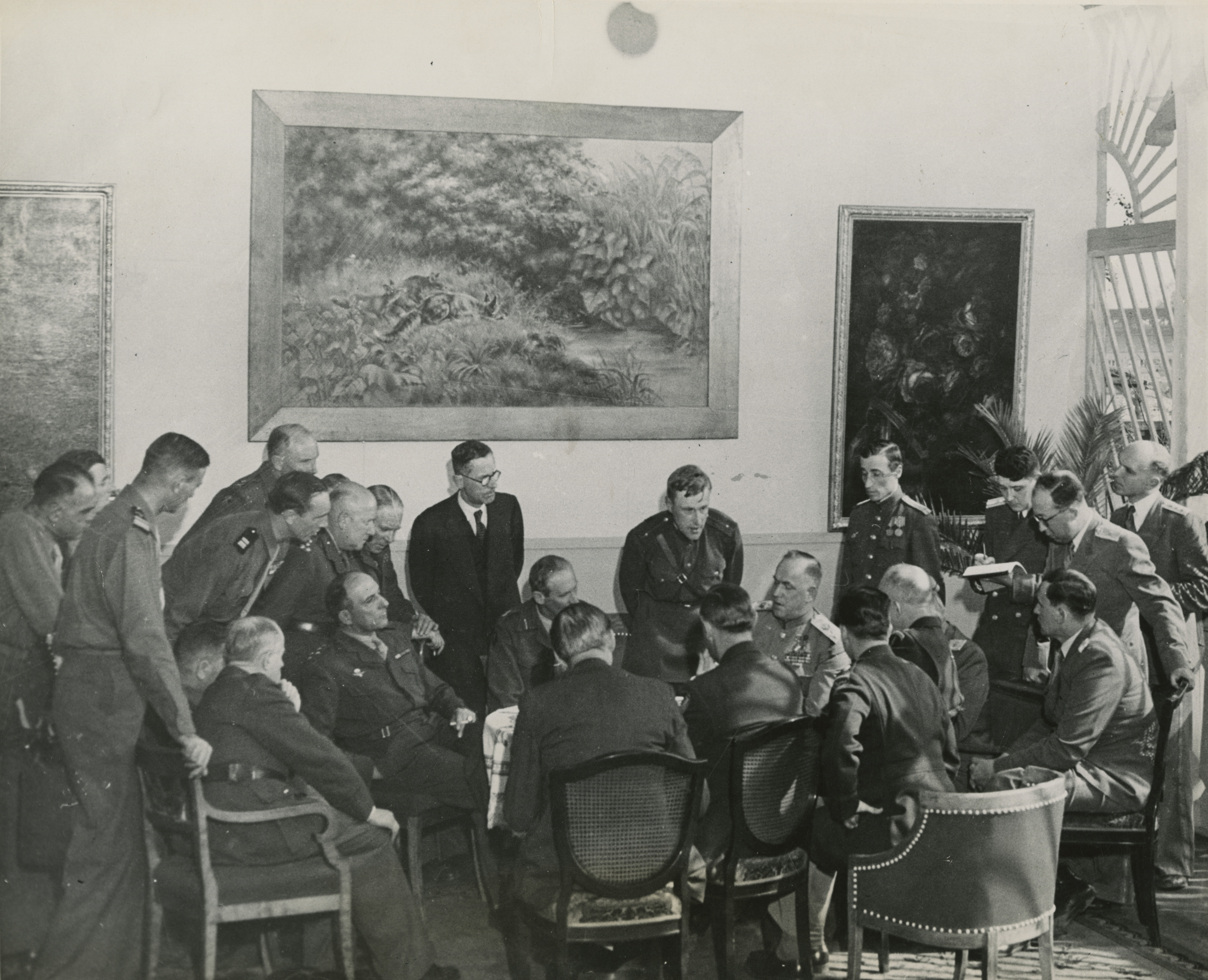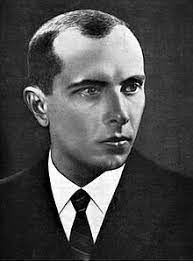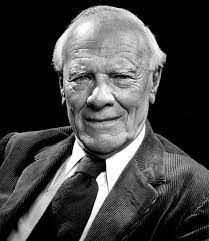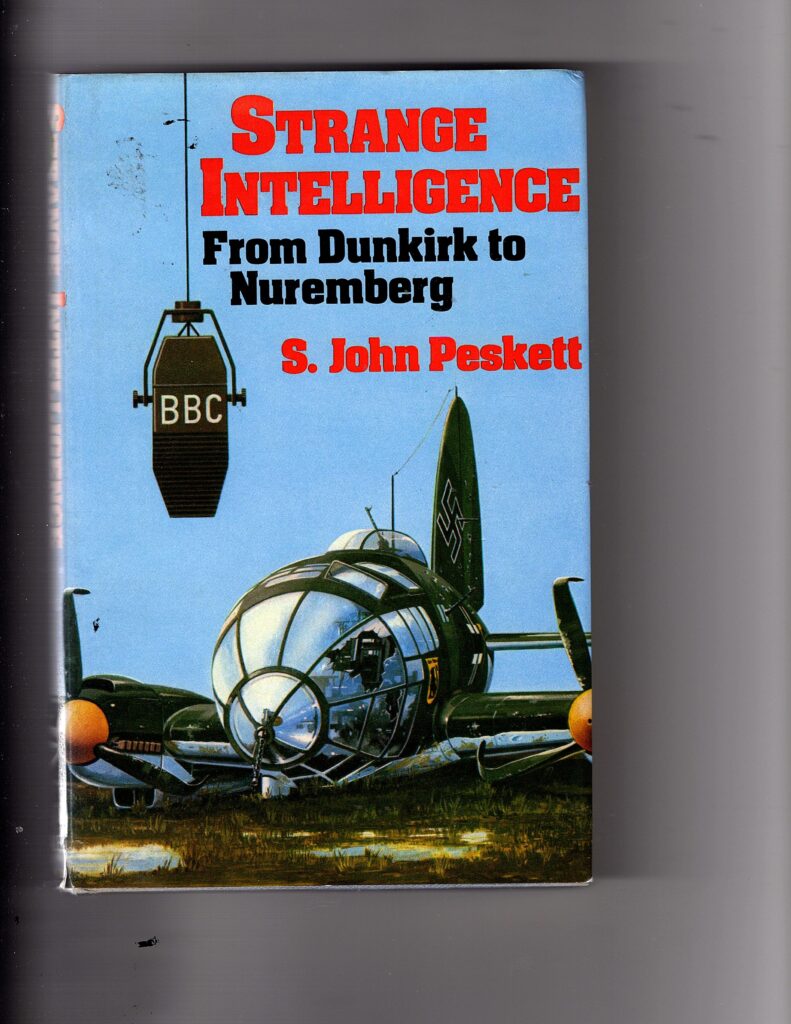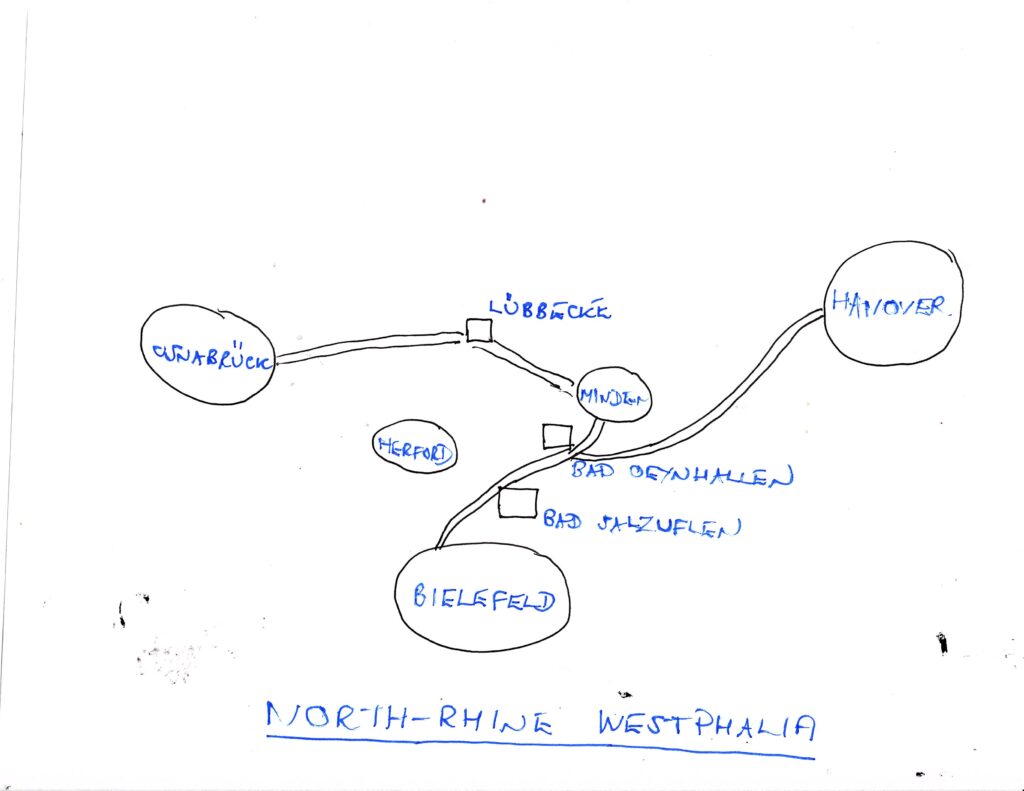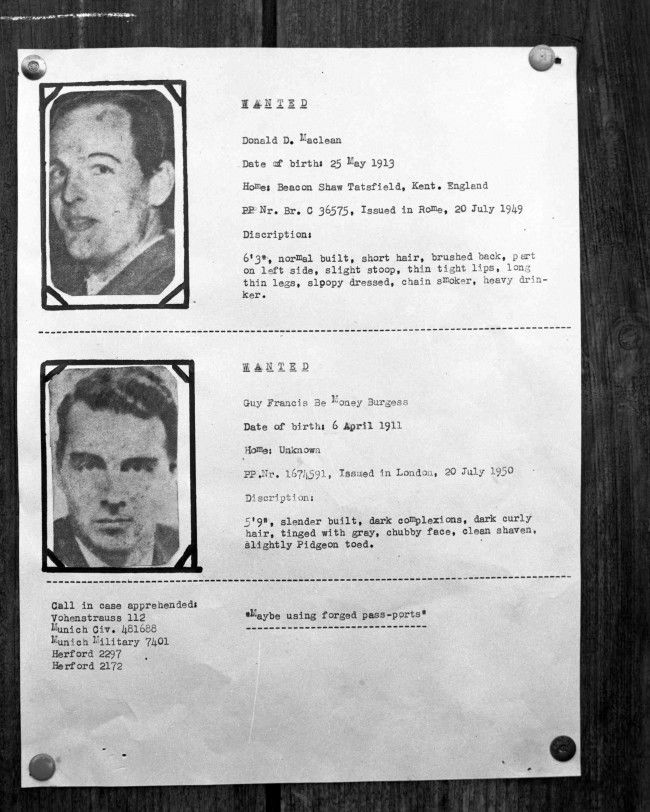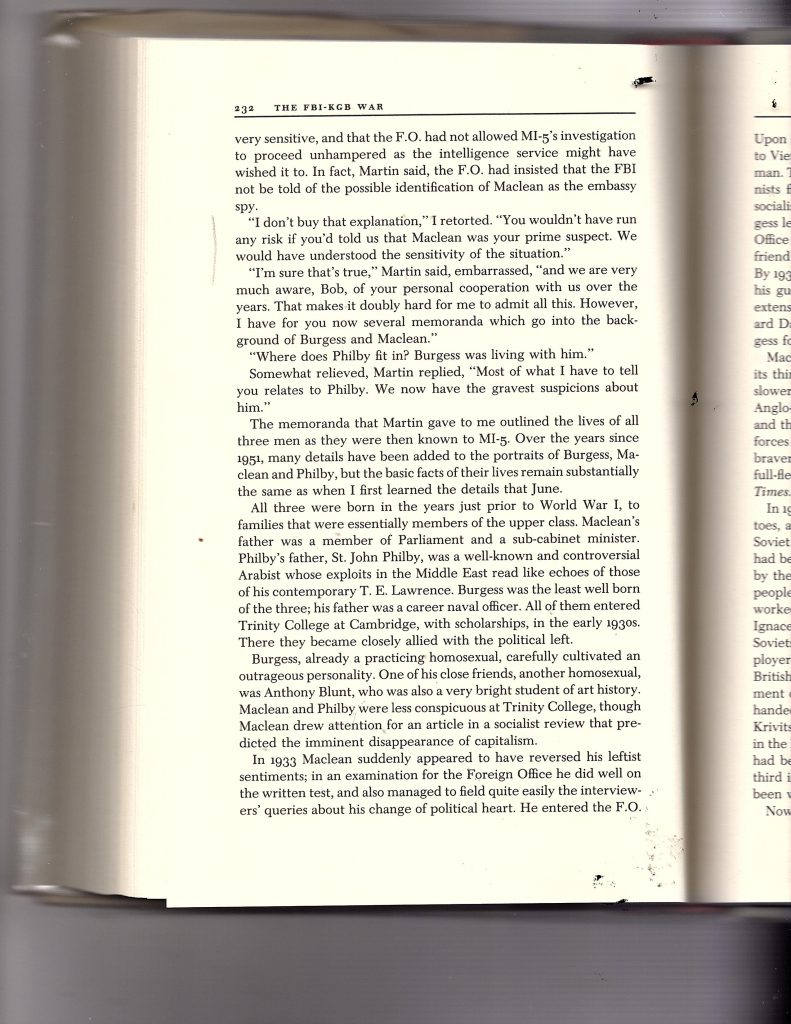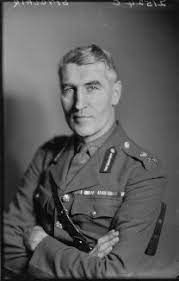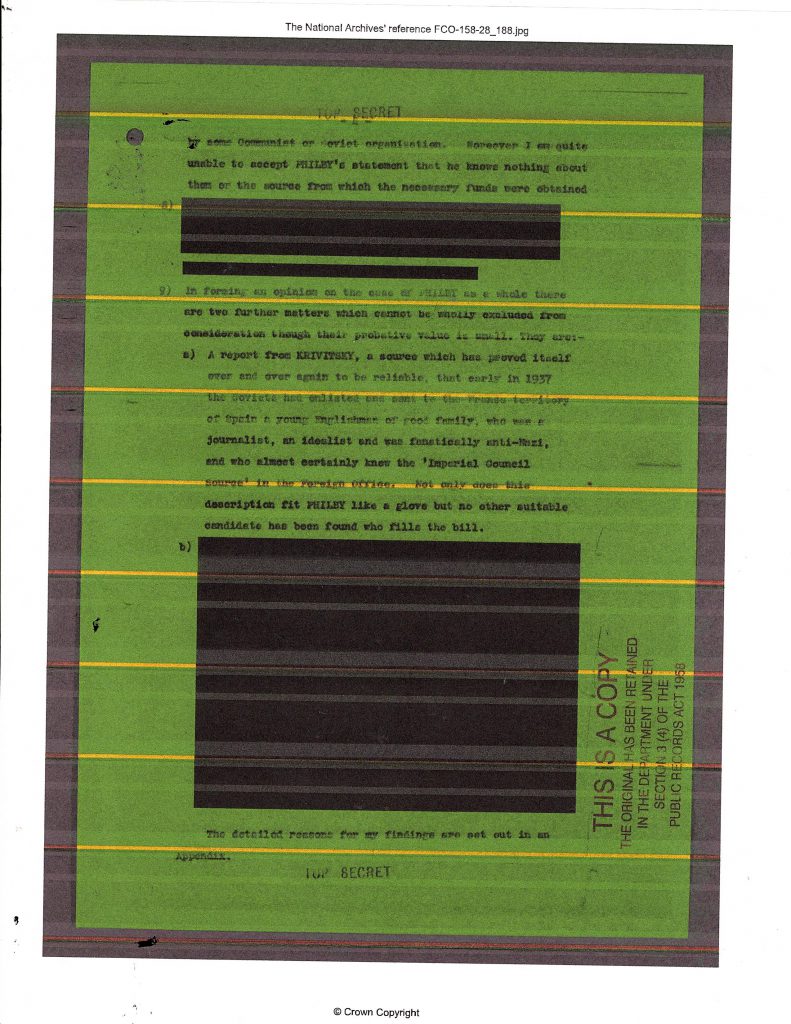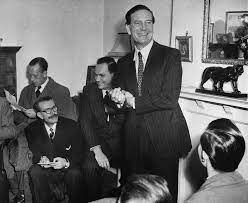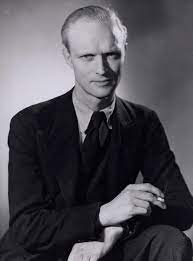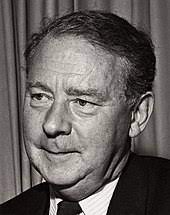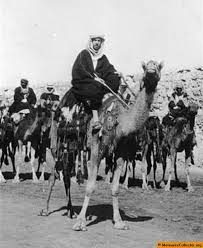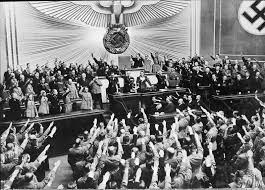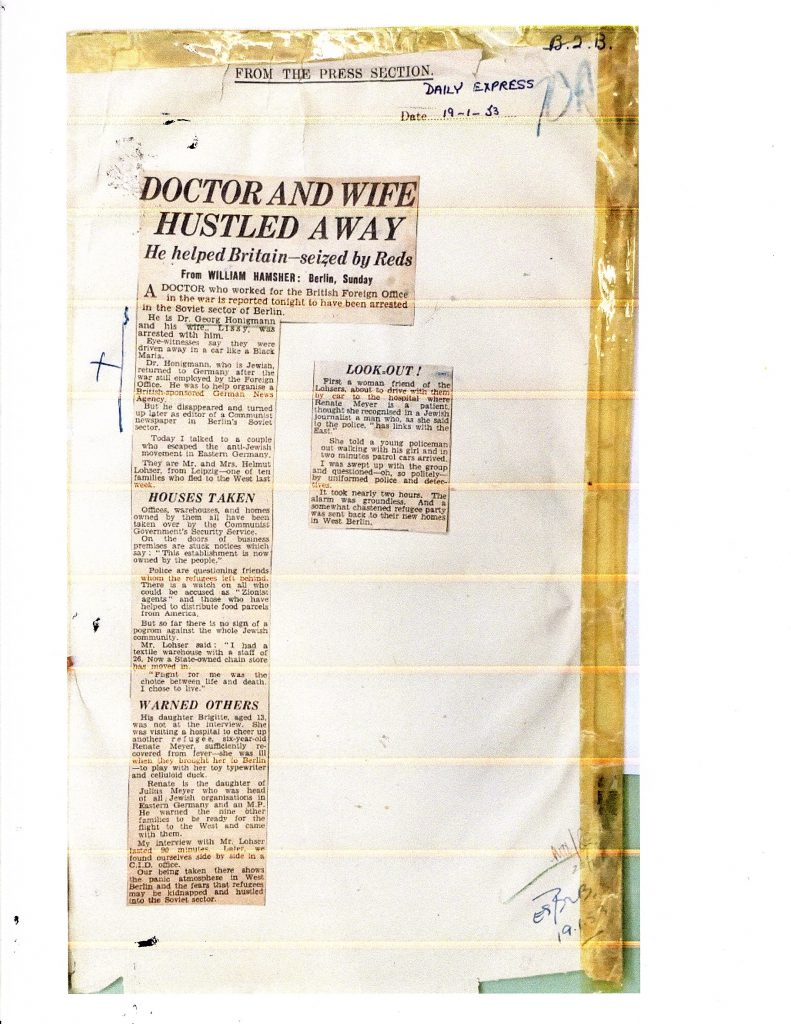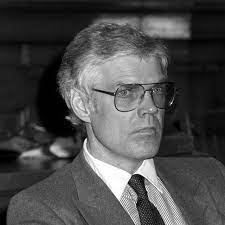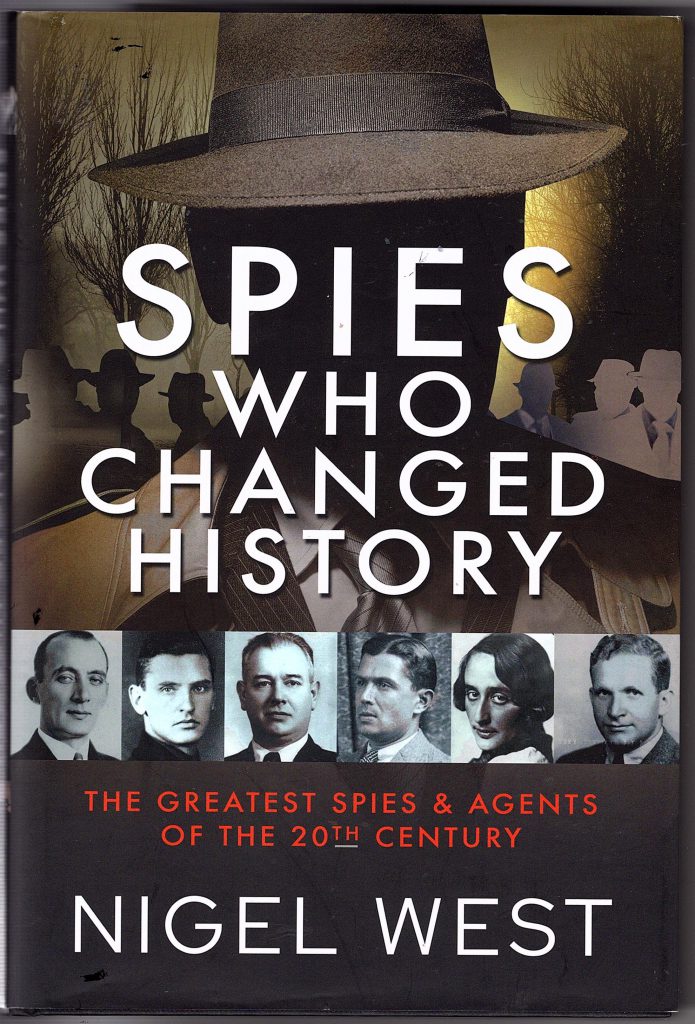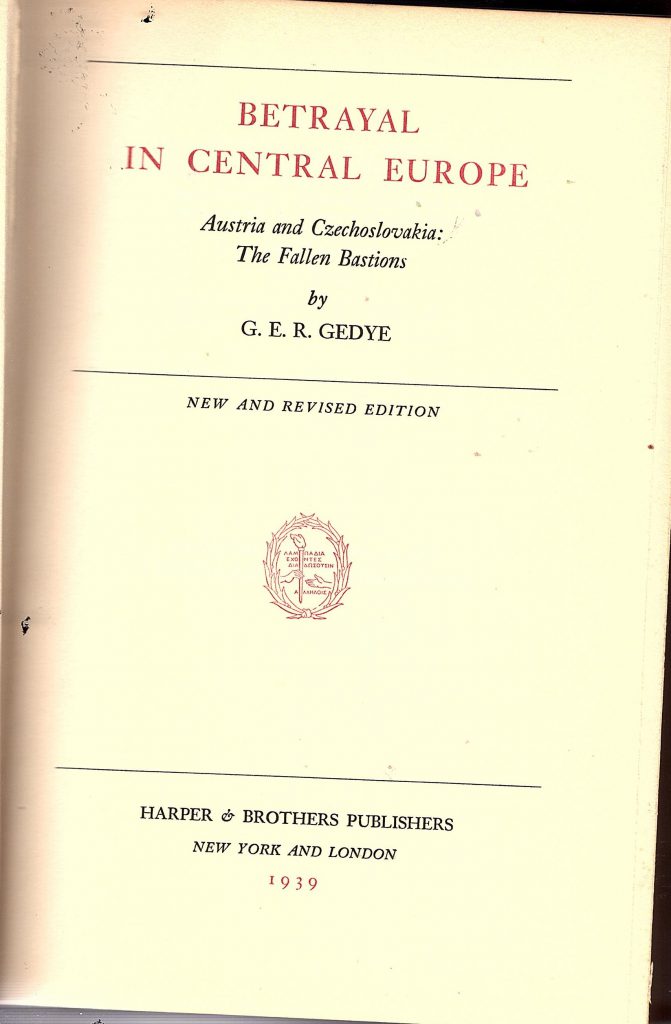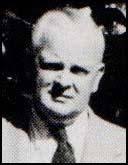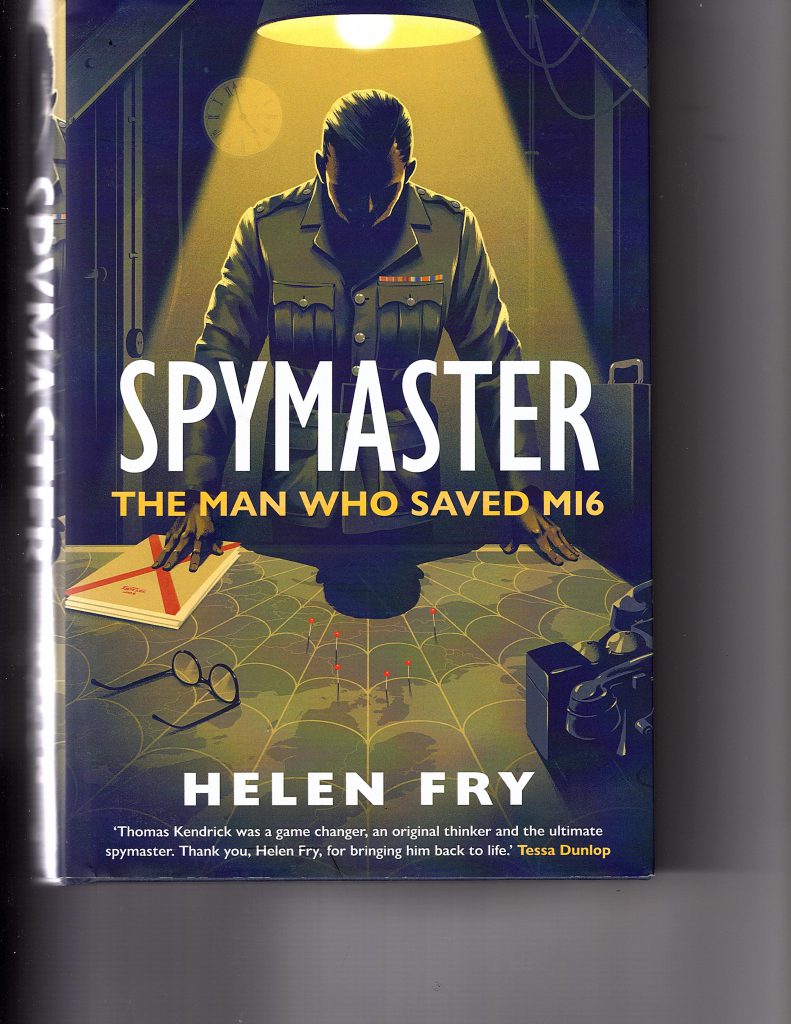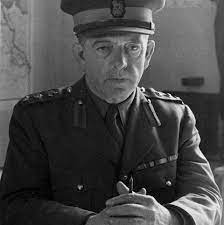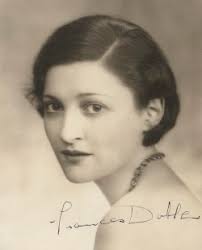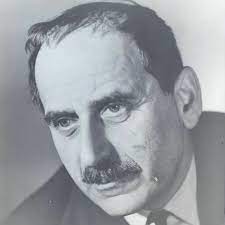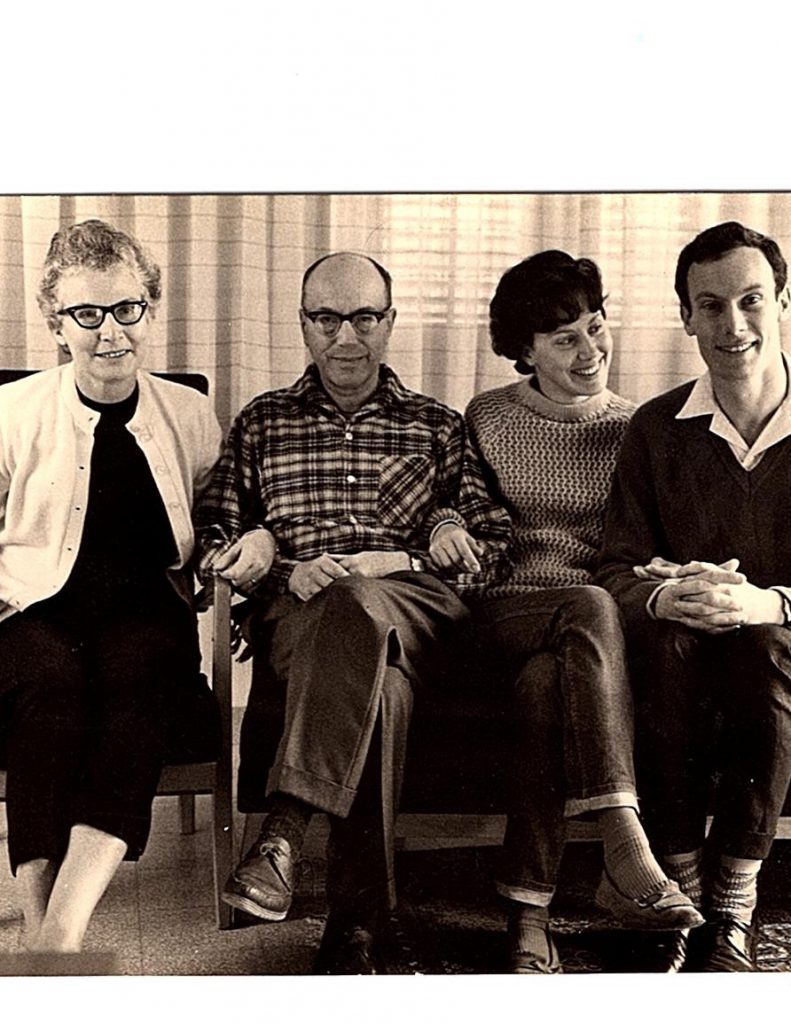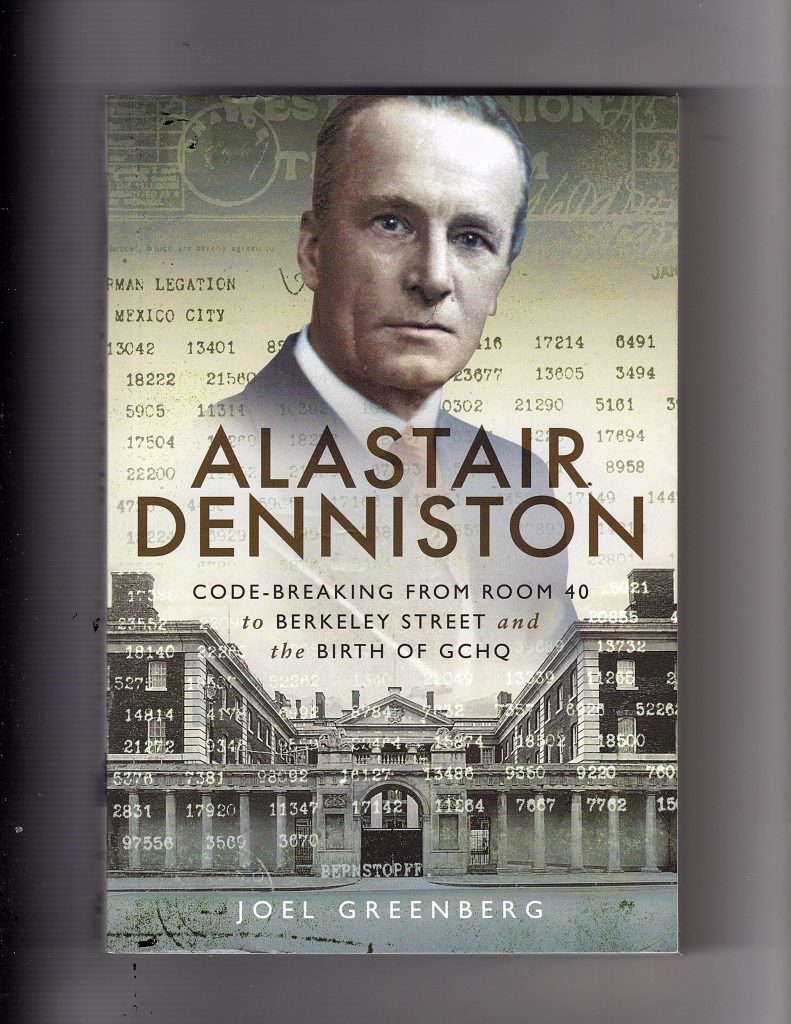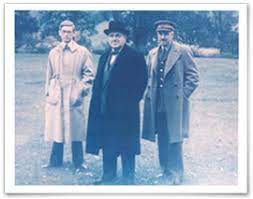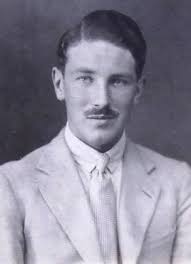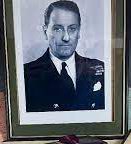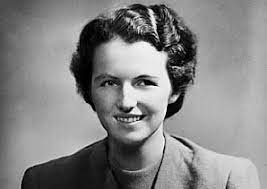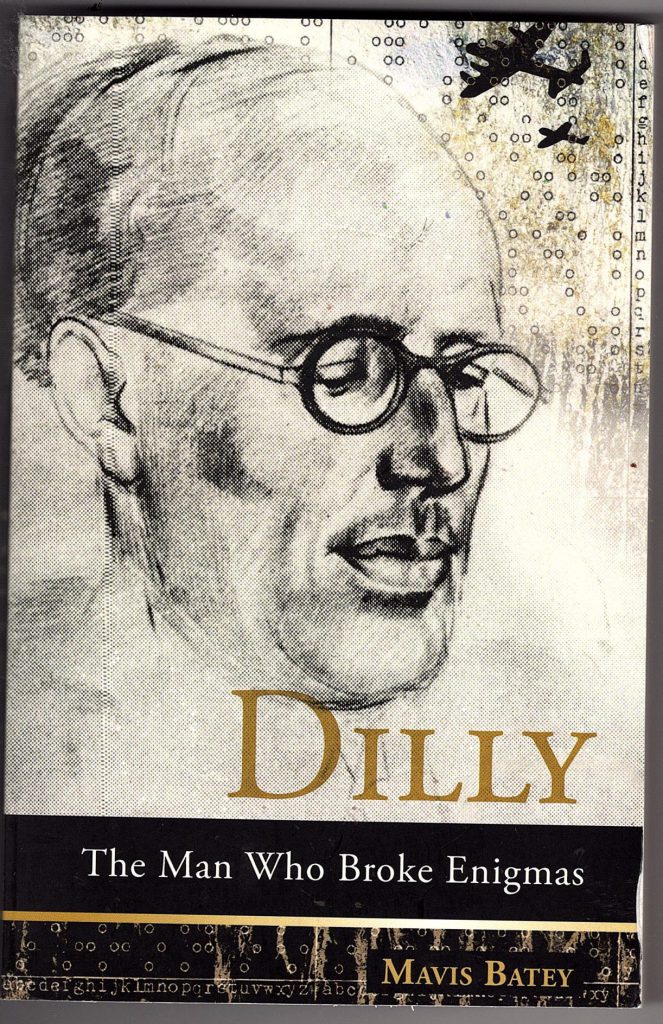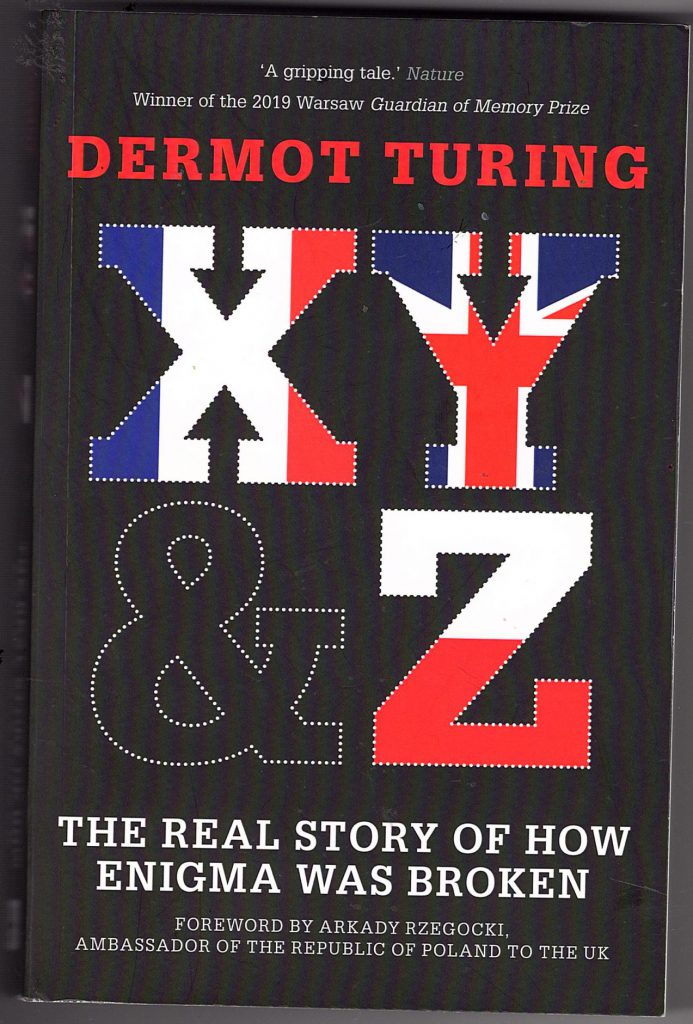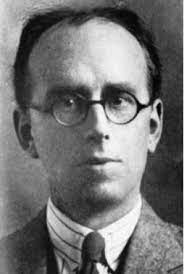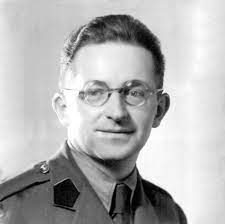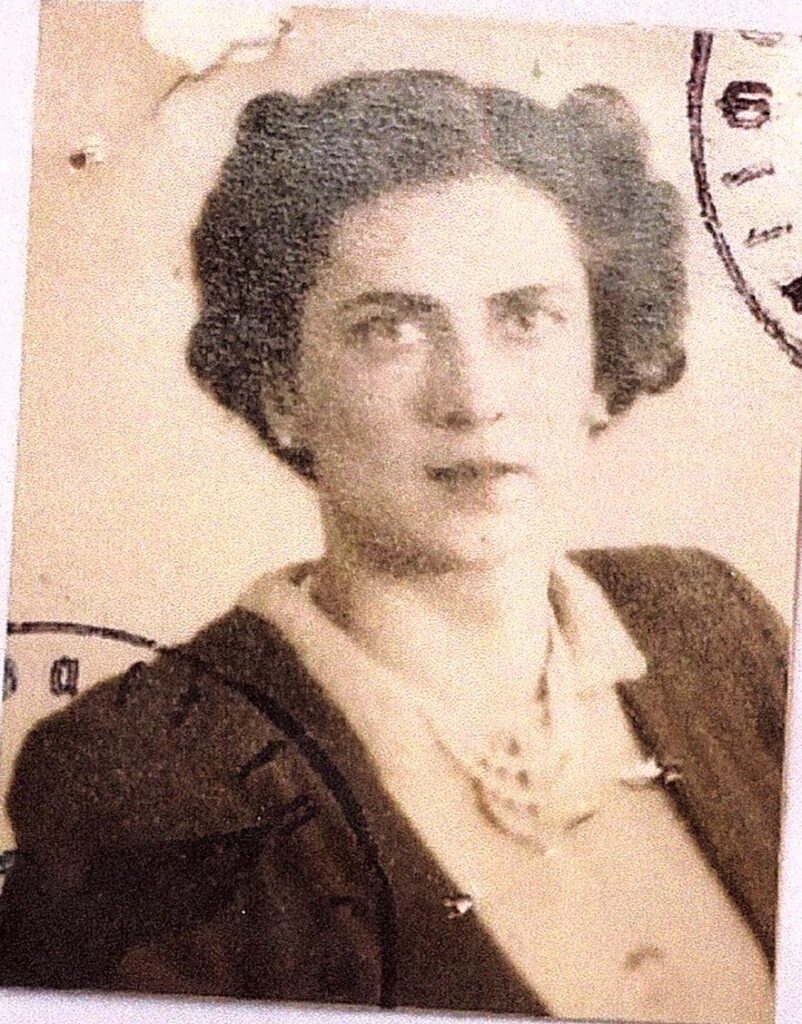
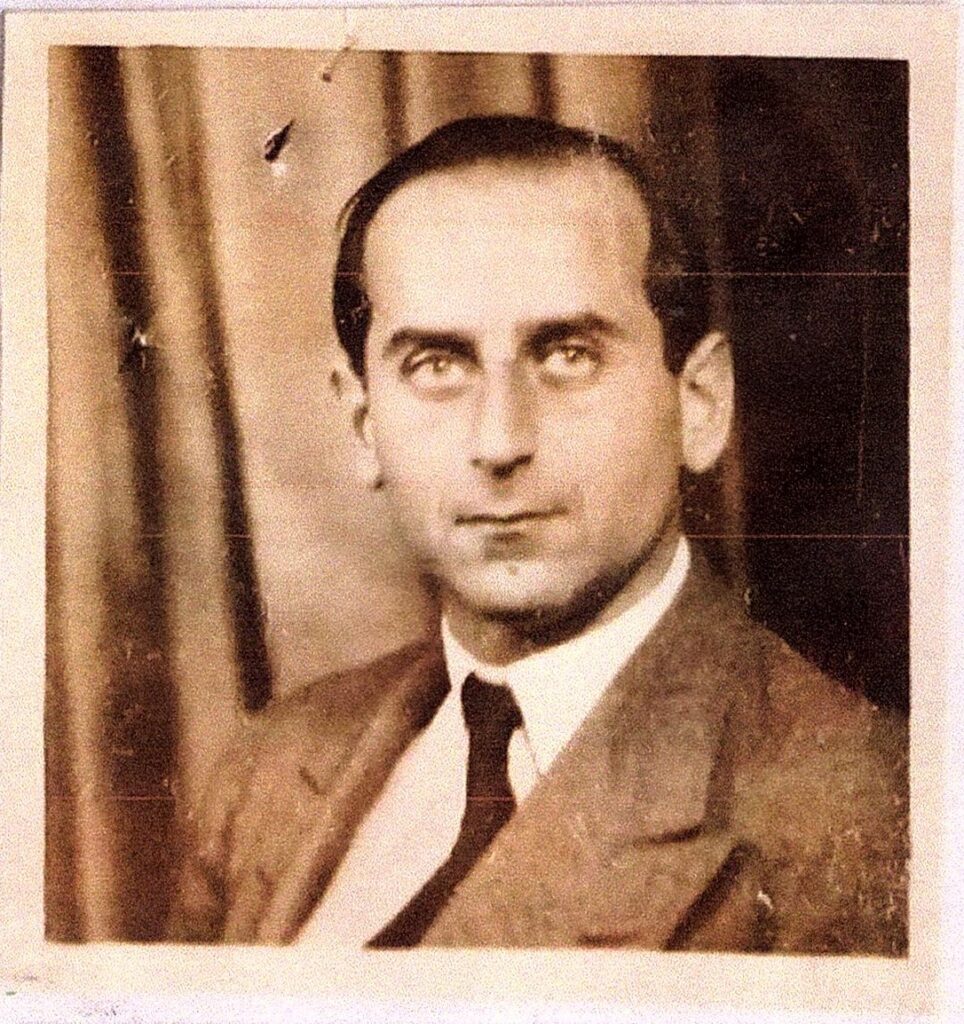
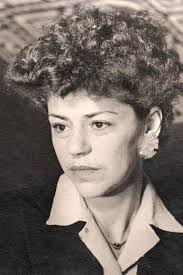
Contents:
Preface
The Phenomenon of Litzy Feabre:
Introduction
MI5 Organization
The Source Material:
Analysis
One Theory
An Alternative Scenario
The Honigmann Files:
Introduction
KV 6/113
Analysis
HO 382/255
Analysis
Conclusion
Preface
Georg and Litzi Honigmann did not in fact become a couple officially until they married in East Berlin in late 1946. And that event may not have been legal and genuine, if the questionable divorce of Litzi and Kim Philby did not actually take place. That would not have worried the MGB *, but it would have raised severe problems for Kim, since he went through a hasty wedding ceremony with Aileen on September 25. He later vigorously spoke to his interlocutors of the disastrous effects that charges of bigamy would have had on his career. Georg and Litzi were, however, an ‘item’ in the UK between 1942 and 1946, and this report explores aspects of Litzi’s identity during that period, as well as Georg’s very puzzling experiences with the Home Office and Immigration authorities since he first applied for naturalization back in 1936.
(* The NKVD/NKGB was reorganized as the MGB in March 1946: the KGB was not created until 1954. In common with other writers, I sometime use ‘KGB’ as the generic term for the Soviet counter-intelligence service.)
This report is divided into two sections:1) The Phenomenon of Litzy Feabre, and 2) The Honigmann Files.
The Phenomenon of Litzy Feabre
Introduction
One of the most puzzling phenomena arising from a study of the archives concerning communist activity in Britain at the end of World War II is the alias given to Litzi Philby, the NKVD agent married to Kim Philby. She returned to Britain from France in January 1940, and at some stage afterwards she was referred to in MI5 reports and memoranda as ‘Litzi Feabre’ (sometimes ‘Feavre’), with the first archival evidence dated August 1945. I do not believe anyone has written about this phenomenon: if you perform a Google search on the term, all you will find are two coldspur reports, and Keith Ellison’s e-book, the relevant section of which was spawned by the coverage that I laid out. Keith Ellison and I have been exploring the probable cause and purpose of this nomenclature, and I use this report as a means of describing the debate.
But what are the incidences of Litzi Feabre’s appearance, and where can they be found? I list and reproduce below the entries from the National Archives on Engelbert Broda, Edith Tudor-Hart and Georg Honigmann (including some items closely related that do not mention FEABRE) in chronological order, in The Source Material. Before that, however, a slight detour.
MI5 Organization
In order for the operational dynamics to be understood, I believe that an explanation of the organization of MI5 is essential. Soon after David Petrie became Director-General in June 1941, he moved ‘subversion’ responsibilities (B4) out of B Division (now focused exclusively on German counter-espionage) to F2 in F Division (‘Subversive Activities’), under Roger Hollis. F. B. Aikin-Sneath covered Right Wing and Nationalist Movements in F3, while Roger Fulford was responsible for Pacifist Movements in F4. E Division was responsible for Alien Control, organized primarily around geographical national groups, with the prime section consisting of E5 (German and Austrian Subjects) under J. D. Denniston.
The unit ‘Agents’, a highly secretive section deploying spies to infiltrate potentially hostile organizations such as the Communist Party of Great Britain (CPGB), sometimes referred to as ‘M Division’ because of its pre-war identity, remained in B Division as B2 under Maxwell Knight. B6 was designated ‘Watchers’, responsible for organizing surveillance through the Metropolitan Police Special Branch: its head was probably John Ottaway. In 1942, Knight’s B2 (‘Agents’) became B5b, reporting through Burt in B5 (‘Investigative Staff’) directly to Guy Liddell – as did B6 – and thus bypassing the management by Deputy Director Dick White, who was responsible for the rest of B Division. The B2 slot was thus vacated. E Division remained ‘Alien Control’, but E5 had been renamed ‘German and Austrian Camp Administration and Intelligence’, still under Denniston. F3 and F4 had been consolidated into a new F3, under T. M. Shelford.
At the end of the war, F2 was designated ‘Communism and Left-Wing Movements’, further split into F2a, under David Clarke, monitoring the activities of the Communist Party, F2b, under Milicent Bagot, studying International Communism, and F2c, under Hugh Shillito, monitoring Soviet espionage. E5 remained the same in E Division (still Alien Control). After Percy Sillitoe replaced Petrie in 1946, with the arrival of the Cold War he instituted some changes, at last addressing the anomalous position of Communist counter-espionage. F Division was absorbed into B Division, and designated B1, still under Roger Hollis. Thereafter, B1a covered ‘Left Wing Subversive Activities’, B1b and B1c were both (mysteriously) designated as responsible for ‘Russian and Communist Espionage Investigation’, while Bagot’s unit became B1d (’International Communism’). B2 came back to life as a separate counter-espionage unit concentrating on a vague assortment of non-Communist non-Russian national groups, split geographically into B2a and B2b. B6 endured as ‘Watchers’.
In November 1947 B1b and B1c were shifted into B2, which dealt exclusively with ‘Russian and Russian Satellite Espionage’, and was divided into B2a (‘Investigation’) and B2b (‘Information’). The former B2a and B2b units were subsumed into a new B1d (‘Residual Counter-Subversive and Counter-Espionage Activities’). Bagot’s B1d became B1b (still ‘International Communism’), but rather incongruously located separately from B2. (In the excerpts below, Bagot is seen as representing both B1b and B1c in the months before the November 1947 re-organization.) B5 and B6 were then integrated into a motley B4 section: B6 became B4d, now under Harry Hunter, while Knight’s B5b (‘Agents and Informers’) became B4c.
Further changes occurred during the next few years. In March 1951, the new head of B1, John Marriott, set up a new structure for his section, with Maxwell Knight’s B4c being incorporated into B1 as B1k. Knight’s section thus came to reside under the same roof as the classical counter-espionage units. B1a (‘British Communist Party/Organization’) sat alongside B1b (‘International Communism’), while several other units within B1 covered multiple aspects of Communist activity in the country. B2 was presumably left untouched, since B2a and B2b appear from the evidence to have endured well into 1952. At some stage, William (‘Jim’) Skardon took over B4d.
The important lesson to be taken from this description of some often incongruous and complex transformations is that the surveillance activities of the Special Branch of the Metropolitan Police were consistently distant from the counter-espionage units within F and B Divisions, and that Maxwell Knight’s ‘Agents’ unit was for most of the period under review both logically and physically removed from those same sections, and not under the same management. Moreover, during the war, uncertainty over how to treat ‘refugees’ from German-speaking countries (were they Nazi sympathizers, Communist subversives, or friendly asylum-seekers?) was reflected in the split between geography and ideology represented by dispersal of responsibilities across B, D and E Divisions. Knowledge could thus be quite easily compartmentalized, and was not easily exchanged or consolidated. It was quite a chaotic set-up.
(I have relied largely on The Security Service, 1908-1945: The Official History by John Curry, and MI5, the Cold War and the Rule of Law, by K.D. Ewing, John Mahoney, and Andrew Moretta (2020), supplemented briefly by Nigel West’s two histories of MI5 (MI5 and M.I.5. 1945-1972) for this analysis of the flux of MI5’s organization. Christopher Andrew’s authorized history is of little value in this domain. I have the archival material used by Ewing, Mahoney and Moretta on my desktop, but have not yet studied it in detail.)
The Source Material
(A) KV 2/1013 (Tudor-Hart)
Serial 88a, from E5 (L), to F2b through F2a (Miss Ogilvie) 9.9.45 (copied into KV 6/113 at serial 40A, identifying source L [LAMB] as KASPAR [an ‘agent’ or ‘informer’ named Laemmel working for Maxwell Knight])
‘Edith Tudor-Hart has gathered around her an interesting circle of intellectuals, some of whom are members of the Communist Party and some only sympathisers. . . .’
‘E T-H’s circle includes: Lizzy FEAVRE or FEABRE née Kalmann of 96 Wellesley Court, N.W.8. She was born in Vienna and left about 1934 for the U.K. Later she went to France where she lived for about three years and married an Englishman there thus acquiring British nationality. She is separated from her husband and was living with Dr. Georg HONIGMANN whom she recently left owing to a disagreement. She is at present ill and is living somewhere in Fitzjohn’s Avenue, N.W.3. She is a member of the British Communist Party and a shop-steward.’
(B) KV 2/1013 (Tudor-Hart)
Serial 93z, extract from xxxxx report, for T-H, 12.2.46
‘Edith TUDOR HART is said to be in touch with a certain Anna WOLF who is apparently attached to the American diplomatic representative in Vienna, and is a close friend of Lizzy Feavre.’
(C) KV 6/113 (Honigmann)
Serial 46a, from B2B via F2ab and Source KASPAR, 28.5.46
‘Capt. ATKINSON, 775 Coy. R.A.M.C, C.M.F., is in correspondence with Lizzy FEAVRE whose friend, Dr. Georg HONIGMANN recently left for Berlin where he joined the Communists (see report of *18.1.46).’
* Does not appear in Minute Sheet or File
(D) KV 2/1014 (Tudor-Hart)
Serial 103a, B2b to F2ab (Smith), 20.6.46
‘Lizzy FEAVRE has been more active during the last few weeks, while Ala LOEW-BEER seems to have retired and Edith TUDOR-HART is engaged mainly in Austrian activities in connection with the ‘FRIENDS of AUSTRIA.’
‘Among Lizzy FEAVRE’s contacts the following are worth mentioning: – Catherine WEIZENBAUM in Paris, prominent in the Austrian World Movement; a certain Lubinsky, also in contact with Edith; Dora WIMBORNE, member of the C.P.G.B.’
(E) KV 6/113 (Honigmann)
Serial 47A, from B2b via F2ab and Source KASPAR, 28.6.46
‘It has been learned that Georg HONIGMANN (see reports of the *18.1.46. and 28.5.46.) had left this country some weeks ago to take up a post with the propaganda section of the British Control Commission in Hamburg. After his arrival in Berlin he seized the first opportunity to disappear and is said to be working for the Russians. He is in communication with his friend Lizzy FEAVRE, and the latter related scornfully that the whole British Security Service and the Police in Germany have been searching for him on the assumption that he had been kidnapped by the Russians.’
* Does not appear in Minute Sheet or File
(F) KV 2/2354 (Broda)
Serial 361Z, B2b to F2ab, 23.7.46 from source KASPAR (LAMB), No. 165, 20.7.46
‘It would appear that E. BRODA and his former collaborators have been withdrawn from intelligence work and are more or less inactive at present. This holds good for Edith TUDOR-HART too and even for Lizzy FEAVRE who seemed to play a somewhat more important part during the last few weeks and still displays much more activity than the others, but she admitted that she had to refrain from such work owing to the fact that her friend, Dr. Georg HONIGMANN, had taken up work in the Russian zone (see report of 26.6.46). She intends to go to Paris on the 5.9.46 and from there on a special party mission to Prague. She also intends to visit DR. HONIGMANN in Berlin. She has already got her passport and visas and also the ticket of the Air France, issued in the name of Lizzy Philly which seems to be her real name, though she has always been called FEAVRE and even received mail under this name.’
(G) KV2/1014 (Tudor-Hart)
Serial 109a, B4c/FCD (F. C. Derbyshire) to B1a (Wethered), 6.11.46
‘Edith TUDOR-HART has resumed contact with J. DESSER and also with Bert BRANDT, a C.P.G.B. member (a close friend of Lizy PHILBY through whom he got acquainted with Edith.)
‘Lizzy PHILBY@FEAVRE (see report of *15.8.46) is in Berlin, working together with Dr. HONIGMANN.’
* Does not appear in Minute Sheet or File
(H) KV 6/113 (Honigmann)
Serial 56A, copy in PF/68261/Y, shown to Col. Vivian by B1 on 7.7.47 on ‘Alice (Lizzy) HONIGMANN @ FEAVRE nee KOLLMAN or KOHLMANN’.
‘Alice HONIGMANN @ LIZZY FEAVRE first came to notice in September 1945 when she was reported to be a member of the British Communist Party and a shop steward, and to belong to Edith TUDOR-HART’s circle of Communists and Communist sympathizers’.
(I) KV 6/113 (Honigmann)
Serial 57a, from Bagot (B1c) to Milne of MI6, 9.7.47
‘Alice Lizzy HONIGMANN, alias Lizzy FEAVRE née KOLLMANN or KOHLMANN, height 5 ft. 5ins., possessing black eyes and brown hair, was born in Vienna on 2nd May, 1910. She first came to notice in September, 1945 when she was reported to be a member of the British Communist Party and a shop steward, and to belong to Edith TUDOR-HART’s circle of Communists and Communist sympathisers.’
‘Alice HONIGMANN first came to England in 1933. She acquired British nationality by marriage, but separated from her husband and lived with Dr. Georg HONIGMANN. The latter left England for Germany in May, 1946. Two months later it was reported that Alice HONIGMANN, although still a keen member of Edith TUDOR-HART’s circle, had had to restrain her activities as HONIGMANN had taken up work in the Russian zone. Her contacts abroad were said to have included Magda GRAN-PIERRE, Budapest, 12, Kovas utcza No. 46, who was reputed to be an important agent in the Hungarian Communist Intelligence network.’
‘Alice HONIGMANN left England at the end of August, 1946, and went from Paris to Prague on 5th September. In November, 1946 it was reported that she was in Berlin working with Dr. HONIGMANN, to whom she has since been married’.
(J) KV 6/113 (Honigmann)
Serial 60a from Bagot (B1b) to MI6, 13.8.47
‘We are now informed that this woman (Alice Lizzy HONIGMANN) is travelling extensively in Europe and that she may visit the U.K. in the near future, using her British passport’.
(K) KV 2/2014 (Tudor-Hart) & Extract at serial 61B in KV 6/113 (Honigmann)
Serial 143b, Martin’s interview with LAMB on 3.10.51
‘LAMB met Lizzy PHILBY spasmodically between 1944 and 1946 in London. His impressions of Lizzy were therefore first hand, but his knowledge of her background was derived almost entirely from Edith TUDOR-HART [redactions]. LAMB did not know when or whence Lizzy came to the UK, nor did he (until a few weeks ago) know anything more about her second husband than that his name was Philby. He still had no idea when or where they were married or when they were divorced. His one firm conviction was that Lizzy lived in a flat in Paris before the war on a fairly lavish scale. When asked how he knew she lived well while in Paris, He remembered Lizzy had a bill for £150 for storage of her furniture in Paris throughout the war, from which he had deduced that her possessions there must have been fairly substantial.’ He first met Lizzy in 1944 when she was living with Dr. Georg Honigmann.
‘LAMB said that (until a few weeks ago) he knew nothing of PHILBY except that he and Lizzy were divorced by 1944 (note – this is in fact not true). He had the impression, however, that although divorced they were still on good terms.’ [Document torn] ‘Lizzy knew and visited PHILBY’s second [sic!] wife and two children.’
(L) KV 6/113 (Honigmann)
Serial 63A, B4d source report, 16.10.51
‘Edith TUDOR-HART does not know whether Alice HONIGMANN still has her British nationality, but assumes this may be so as the latter once said that was her intention. Edith TUDOR-HART did not know anything about her pre-war activities in France.’
(M) KV 6/113 (Honigmann)
Serial 62A, from Arthur Martin to MI6 [almost certainly Philby], 18.10.51
“We are anxious to obtain any information which may be available in Germany concerning Mrs. Alice HONIGMANN. She was born in Vienna on 2.5.1910, the daughter of Iszo and Gisela KALLMANN (or KOHLMANN), the former a naturalized German of Hungarian origin. Mrs. HONIGMANN first married in Vienna a man named FRIEDMANN of whom no personal particulars are available. In 1934 she married a British subject with whom she lived in the U.K. until 1937. Between 1937 and 1940 she had an address in Paris. 67 Quai d’Orsay, but she frequently visited the U.K. and in 1940 resumed permanent residence here. She met her present husband in 1942, or thereabouts, and lived with him until they both left the U.K. in 1946.’
‘We would be very grateful for any information you can obtain about Mrs. HONIGMANN’s past . . .’
(N) KV 2/4091 (Tudor-Hart)
Serial 166a, report by B2a (A. F. Burbidge), 1.12.51
‘From 1945 onwards, xxxxx began to submit regular reports on TUDOR-HART. She was said to have gathered an interesting circle of intellectuals around her and to have organized discussion groups. The circle, which contained such persons as D. N. PRITT, Lizzy FEAVRE, Arthur WYNN and prominent Austrian communists in the United Kingdom, flourished throughout 1945 and up to mid-1946, when it appears to have declined.’
‘Edith TUDOR-HART was first reported to be in touch with Lizzy FEAVRE in the United Kingdom in September 1945, when Lizzy was described as a member of the TUDOR-HART circle. They may, conceivably have been known to each other before that date, having both previously lived in Vienna. Certainly both were in Vienna together between 1931 and 1933. From the reports received from XXXX in 1945 and 1946, Lizzy FEAVRE and George HONIGMANN (with whom FEAVRE was then living) were members of the TUDOR-HART circle . . . .’
‘The parallel of her marriage to Alexander TUDOR-HART and Lizzy FRIEDMANN’s to PEACH is worth some consideration. In both cases the husband, a British national, went to Vienna to marry a woman with a known communist, and possibly R.I.S. or Comintern, background. These marriages were contracted at a time of political turmoil in Austria, when the R.I.S. and Comintern might well have sought such means to protect their agents.’
‘It is also clear that Edith had post-1940 information about PEACH, since she was able to describe him (albeit somewhat inaccurately) as an ace man in M.I.5. This information may, of course, have come from Lizzy.’
(O) KV 6/113 (Honigmann)
Serial 63B, B2a, 9.1.52
‘Cross reference to B.2. A report of an interview with Edith TUDOR HART ostensibly in connection with George HOENIGMAN, the real subject of the inquiry being Lizzie HOENIGMAN and her former husband the subject of PF 604,584. No information of value was gained as a result of the interview, altho’ Mrs. TUDOR HART admitted that she knew HOENIGMAN.’
(P) KV 6/113 (Honigmann)
Serial 66Z, B4d source report, 27.8.52
re Alice HONIGMANN formerly FRIEDMANN nee KOHLMANN and mentioning George Honigmann [no mention of PHILBY or FEABRE]
(Q) KV 6/113 (Honigmann)
Serial 69A, B4d report to B2a (Simkins), 13.10.52
‘From the enclosed issue of ‘Democratic German Report’ it will be seen that Dr. Georg HONIGMANN, husband of Alice HONIGMANN, formerly FRIEDMANN née KOHLMANN [i.e. no mention of PHILBY!] . . .is at present deputising for the editor of ‘Democratic German Report’ as John PEET is on holiday.”
[Alice Honigmann annotated as PF 68261: manuscript also indicates ‘Copy to PF Lizzy PHILBY’]
(R) KV 2/2354 (Broda)
Serial 495A, 14.10.53 in report by Phillimore of B2b
‘April 1946: a vetting inquiry was received for permission for BRODA to lecture in prisoner-of-war camps but P.I.D. decided not to employ him. BRODA was also reported to be in contact with Lizzi PHILBY amongst others.’ [actually KASPAR said ‘Lizzy PHILLY’]
Analysis
These few entries present several conundrums.
- Time-period: There are two entries from August and September 1945, a cluster in the months between May 1946 and August 1947, and an occasional retrospective reference from the early 1950s. Given that Litzi Philby had left the country in September 1946, apparently for good, one might expect that, after that date, any coyness or secrecy about her identity and alias would have been eliminated in the exchanges that took place between various MI5 sections, or even in messages sent to the companion service, MI6. In addition, while the archival material records the existence of the FEABRE alias only after the war, it does not necessarily mean that it was not used earlier.
- Comprehensiveness: Apart from the noted missing items (in ‘C’, ‘E’, and ‘F’), the texts hint at an untold story. If LAMB first met Lizzy FEAVRE in 1944 (‘K’) – probably at the time that she and Tudor-Hart joined the CPGB – why was her appearance not remarked upon, and not recorded, until August 1945 (‘B’)? LAMB had presumably been introduced to her by Edith Tudor-Hart, and, given the circumstances, one would expect her entrance to the scene to be worthy of attention. In ‘N’, Burbidge speculates about a possible acquaintanceship between TUDOR-HART and Litzi PHILBY, and even suggests that TUDOR-HART may have gained her knowledge of Kim PHILBY from Litzi – well before 1945.
- Formulation: The name ‘FEABRE’ (or ‘FEAVRE’) is presented in multiple ways. Item ‘G’ refers to her as ‘Lizzy PHILBY@FEAVRE’, which strongly suggests that ‘FEAVRE’ is a cryptonym, the ‘@’ sign being a convention used by MI5 to denote agents working under cover. Elsewhere the name ‘Lizzy Feabre’ is used as a simple denominative, as if it were her only name (e.g. ‘B’, ‘C’, ‘D’, ‘E’). And then it sometimes appears as one of her many names, as in ‘I’, ‘Alice Lizzy HONIGMANN, alias Lizzy FEAVRE née KOLLMANN or KOHLMANN’, where it is undeniably presented as an assumed, not a real, name.
- Authenticity: The brief biography introduced in ‘B’ (and bizarrely echoed in ‘M’) is clearly bogus. Senior officers in MI5 surely knew when, and to whom, Litzi had been married, and yet a spurious story about her marrying an Englishman in France (with the very un-English surname of ‘FEABRE’) is allowed to flourish. Extraordinarily, Arthur Martin repeats this myth as late as October 1951, in his memorandum to MI6 (‘L’), where he feigns to admit that he does not know that Lizzy had once been married to his addressee, but also omits to record the name of the Englishman whom Litzi had married in France. (It should be borne in mind that Martin had been recruited to MI5 from the Radio Security Service on Kim Philby’s recommendation, so reading between the lines may be appropriate here.)
- Cognition: Officers in various sections of MI5 display an unbelievable level of cognitive dissonance. For example, why, if Derbyshire in B4c (‘G’) can openly equate Lizzy FEAVRE with Lizzy Philby in the space of one memorandum in November 1946, how is it that Bagot in B1c fails to record the equivalence a few months later (‘I’)? Why would the report by Burbidge (‘N’) fail to connect directly the two identities of Lizzy Feavre and Lizzy Philby?
- Integrity: The evidence on FEABRE comes almost exclusively from MI5’s agent LAMB, also known as KASPAR, who had inveigled himself into Edith Tudor-Hart’s confidence. He submitted reports to B2, but he would not have had access to MI5’s intelligence gained from telephone or postal surveillance – something that was imposed on Tudor-Hart throughout the war. LAMB is nevertheless reported as describing mail that Litzi has received under her alias: no other evidence of that appears in the archive. Moreover, his apparent knowledge of her correspondence (acquisition of travel tickets, bills from Paris) cannot be explained. It suggests that MI5 officers were perhaps ascribing intelligence gained through telephone and mail interception (about which they might have been embarrassed) to agents who had managed to get close to their targets, and they even inserted such facts into transcripts of an interview (‘F’ & ‘K’).
- Contradictions: The statements of LAMB (massaged, no doubt, by his handlers) are frequently contradictory. He originally reported (‘B’) that Litzi had married a man called Feavre in France, but in his interview by Martin (‘K’) he states that ‘he did not know when or whence Lizzy came to the UK, nor did he (until a few weeks ago) know anything more about her second husband than that his name was Philby. He still had no idea when or where they were married or when they were divorced.’ Yet he soon after claims they were divorced in 1944 (an assertion that Philby had already reinforced in 1943, according to Ian Milne’s memoir). In ‘F’ he is reported as saying that Litzi had already got her passport and visas and also the ticket of the Air France, issued in the name of Lizzy Philly [sic]. He adds: ‘. . . which seems to be her real name, though she has always been called FEAVRE and even received mail under this name.’ The use of ‘always’ is ambiguous: on the one hand, it could mean ‘for the longest time’, or on the other, ‘exclusively’, ‘without exception’. Irrespective of which meaning was intended, it is not clear how LAMB could make that claim, since he did not have complete access to all her movements. He was surely not in a position to see her mail, and, in any case, was such mail addressed to FEAVRE or FEABRE? One would expect only one version of the name to be used in correspondence. Maybe Tudor-Hart informed him, but it sounds as if this intelligence came from elsewhere.
- Deception: In whatever way the evidence is examined, it is clear that a large amount of information is being withheld, or misinformation is being distributed, or that deception (namely the dissemination of disinformation) is being carried out. Either the scribes are in ignorance or misinformed (but then why do their recipients or supervisors not correct them?), or they have been instructed to conceal or distort the truth, or chaos exists to the extent that no one really knows what is the real identity of the person known as FEABRE. For example, why would a really sharp and experienced officer such as Bagot conceal the relationship with PHILBY when she writes (in ‘I’) about Litzy KOHLMANN/FEABRE/HONIGMANN? Why would Litzy’s status as sometime wife of PHILBY be overlooked in ‘Q’?
One highly significant aspect of the fragments, however, is the process of ‘extracting’ or ‘copying’ to other Personal Files. In almost every incidence where the name ‘FEABRE’ or ‘FEAVRE’ appears in a document, a handwritten annotation indicates that the item is to be copied to the PHILBY Personal File (PF 68261), sometimes to the ‘Y’ (Confidential’) folder. This activity strongly suggests that, at the time an original memorandum, letter, or report was written, when it was filed in its native location, the item was recorded in the multiple corresponding files belonging to the persons referenced in it [see extracts from KV 2/1013 below].


Why can I be confident that these entries were made at the same time? From a procedural standpoint, it would have been most efficient to populate the relevant files at the time of the event: a later trawl through the archives to discover necessary duplications would have been not only a time-wasting process, but would mean that the files would unavoidably have been out-of-date for a while. Moreover, the annotations look as if they have been made in the same script and ink-colour as other comments. On the figure above, the date ‘16 SEP 1945’ boldly indicates the date the report entered the archive.
Thus it is safe to conclude that the equivalence of Lizzy Feabre and Litzi Philby was known – at least to senior officers, and to the custodian of the Registry – at the time each entry concerning FEABRE/FEAVRE was made. In that case, one has to consider, again, why this fact was not generally known among the junior officers.
One Theory
As readers will recall, I recently presented the hypothesis that Kim and Litzi Philby had approached MI6 (and, vicariously, MI5) in the guise of reformed characters who, in the wake of the Nazi-Soviet pact, wanted to assist the services in countering Soviet subversion. The alternative theory (and the one that has persevered in the literature) is that the Philbys were working exclusively for the NKVD, and successfully concealed their activities from MI5 and MI6. This hypothesis, however, is unable to accommodate a number of startling events, from Kim’s arrangements to bring Litzi home from France at the end of 1939 with the support of the Home Office, through the failure to explore the hints from Krivitsky and the lax surveillance of Litzi during the war when she bore two identities, to the reluctance to interrogate her during the summer of 1946 after Honigmann had absquatulated from a position with the Control Commission in Germany to join the Communists in East Berlin.
My research colleague Keith Ellison is not [yet?] convinced of my thesis, although he has failed to advance any rival theory that can address the paradoxes and enigmas of the archival record. As an example of his scepticism, he has challenged my interim conclusion that ‘FEABRE’ was a (maybe accidental) nomenclature exploited by MI5 to disguise its imagined manipulation of Litzi Philby, and suggests that it was Litzi herself who constructed her alias as a way of disguising her identity from her Communist associates – apart, of course, from her close friend Edith Tudor-Hart. His argument runs (as I understand it) as follows:
Kim Philby did not have MI6 looking over his shoulder in late 1939 when he was helping Litzi in and out of the country, and thus the Secret Intelligence Service would not have known of her existence and movements. Litzi needed to protect the good name and reputation of Kim when she became involved in Communist Party (CP) work in the UK, and thus adopted the alias. She appears (to Ellison) to have been a member of the British CP acting as a liaison to the Austrian CP represented by Edith Tudor-Hart. Since there is no mention in MI5 files of Feabre until September 1945, and no evidence of a link between Feabre and Philby until the report from KASPAR in 1946, it is safe to assume that this was a recent discovery by the Security Service. KASPAR’s report confirms that the communists that she met (apart from Tudor-Hart) all knew her as Feabre, not Philby. The first time that she came to the notice of MI6 in her own right is when she applied for a job in 1943, and used Kim Philby as a referee. In August 1946, Philby approached his boss, Valentine Vivian, to let him know he wanted a divorce: this was the first time that Vivian had heard of Philby’s marriage to a Communist, and he requested a ‘trace’ from MI5. After the war, MI5 exploited Litzi’s alias when they corresponded with external organisations (primarily MI6), although the reason for that strategy is obscure. Likewise, when MI5 corresponded with junior staff in MI6, yet failed to make clear that Feabre and Philby were the same person, they were trying to perform some unexplained cover-up ‘for the record’.
I see several problems with this hypothesis, namely:
- My first instincts were to imagine that, during the late 1930s, Litzi’s movements across Europe had probably been closely monitored by MI5, abetted by MI6, which was responsible for surveillance activity on foreign territory. After all, that is what happened to multiple other suspected Communist subversives, and Helenus Milmo’s report on the Philby interrogations strongly indicates such a process. Yet I concede that Keith Ellison is probably correct when he asserts that Milmo’s conclusions may have been derived exclusively from an inspection of Litzi’s passport. That theory raises many more questions, however: Milmo’s project was rushed, and he had no opportunity or time to initiate fresh investigations into Litzi’s past. Thus, if MI5 had indeed acquired Litzi’s old passport in a project between the disappearance of Burgess and Maclean and the presentation of files to Milmo, why did Dick White not exploit the results in his November report? (This is a complex but very important issue, and I plan to analyze it in more detail in a future coldspur bulletin.)
- Valentine Vivian’s claim about his ignorance about Litzi’s past must be utterly phony. He entrusted his recall of events from August 1946 to Seale and McConville, the biographers of Philby, shortly before he died, but he was surely trying to whitewash his past. He presented himself as Philby’s boss at the time. No independent verification of his assertions is possible, and his attempt to present himself as an ingénu in the whole Litzi Philby saga is simply feeble. What is more, Philby himself supplied information to his Moscow bosses that Vivian had been moved aside to his staff Security position in March of 1946, information that can be confirmed from other sources. Vivian was no longer Philby’s boss in August 1946, and John Easton (to whom Philby now reported) would not have looked kindly on Philby’s bypassing the chain of command.
- There would have been nothing more obvious to the authorities that Litzi was involved in surreptitious behaviour than an attempt by her to create a new identity. (She would not have dared assume any such role without NKVD’s approval.) Moreover, if she was working exclusively as an agent for the NKVD, the first thing that she would have been instructed to do was to avoid the CPGB. The NKVD knew it was bugged, and the whole point of Moscow-controlled subversive operations was to have them undertaken by non-party agents. It is probable that Litzi joined the CPGB only towards the end of the war (probably in late 1944), as the archive suggests, but, if Litzi seriously wanted to ‘protect the good name and reputation of Kim’ under orders from Moscow, she would have stayed firmly away from the Party.
- Philby joined MI6 only in 1941, and did not regain the confidence of his Moscow masters until 1944. Before then he was the subsidiary figure to Litzi. Moscow was in no way embarrassed or threatened by having their failed agent Kim Philby associated with Litzi, and even believed that her marriage to him needed to be protected in order for her to maintain residential status.
- If Litzi had been seen to mix in communist circles at all, and presented herself as ‘Litzi Feabre’, the interest of MI5 would have been perked immediately. She visited the Bentinck Street apartment rented from Lord Rothschild by Blunt and Burgess, and showed her marital status with Kim quite openly. It appears that they were not uncomfortable about her new identity. And she confidently approached her husband for a reference for a job in 1943, not hiding under any spurious alias. Yet a fresh ‘legend’ was suddenly attached to her. The MI5 agent LAMB reported that Litzi had arrived in the UK in 1934, and then moved to France, where she married an Englishman, consequently gaining British citizenship. Apart from the anomaly that an Englishman would be unlikely to bear the surname ‘Feabre’, if Litzi presented this as fact, she would have risked being imprisoned for bigamy, or being deported. If she had been viewed by MI5 as a potentially dangerous Communist agent, presenting a false biography would have immediately gained MI5’s attention. That this did not happen suggests that she was not the source of the story.
- It would be utterly irresponsible for anyone in MI5, knowing that Litzi’s cover as ‘Feabre’ was bogus and criminal, to pretend that it was not so, and to decide to exploit that subterfuge to deceive their contacts in MI6 by disguising her real identity. LAMB’s note of July 20, 1946 indicates that he then believed that her real name was ‘PHILLY’ (sic), but, up until then, he had not expressed any uncertainty about her name of ‘Feavre’.
- In the same memorandum, LAMB claimed that Litzi had ‘always’ been called ‘Feavre’, which suggests a far more long-standing arrangement, or a degree of knowledge that he could not possibly claim. While he stated that he had become acquainted with her only in 1944, that assertion either indicates a closer and more enduring awareness of Litzi’s history than is referred to in the archival material, or perhaps reveals what he had been told by others, conceivably Edith Tudor-Hart, but more probably MI5 officers. Moreover, it would hardly make sense for Litzi to live openly as Mrs. Philby for five years, before deciding to change her name.
- LAMB mentions mail that Lizzy has received under her alias, but no other evidence of that appears in the archive. LAMB, as an agent of MI5, would not have been privy to warrants intercepting mail, and his apparent knowledge of her correspondence, including the acquisition of travel tickets, cannot be explained. This would appear to be an example of MI5’s mis-attributing the acquisition of intelligence through clandestine means such as Post Office Warrants by means of indications that human agents in contact with targets are the source.
- This narrative cannot explain the extraordinary events of the summer of 1946. Georg Honigmann absconded at the end of May: his relationship with Litzi was well-known. If Litzi had been a hostile Soviet agent, she would immediately have been interrogated, and restrictions placed on her travel. The archives show signs of panic on the part of MI5, yet they never take any steps to re-inspect Honigmann’s curriculum vitae, or explore the connections that Honigmann might have had with other subversive elements. Instead the major activity in this scenario appears to be a contrived negotiation between Kim Philby and Valentine Vivian to organize his divorce from Litzi.
An Alternative Scenario
I believe the sequence of events was more on the following lines:
In September 1939, Kim Philby achieved a deal with MI6/MI5 whereby, since he and Litzi had renounced any sympathies for the Soviet Union after the signing of the Nazi-Soviet pact, he and his wife would work for British interests. While it took Kim a while to be recruited by any intelligence service, Litzi was free to start her infiltration of Communist organizations in Britain, including the Austrian Council run by Eva Kolmer and the CPGB. She would have confided the subterfuge to her friend of long standing, Edith Tudor-Hart, who introduced her to her contacts, including her lover Engelbert Broda, the chairman of the Austrian Communist Party in exile. No doubt, in the spirit of conspiratsia, Litzi’s true name had to be concealed from some less reliable colleagues, and her surname may not have been revealed. Security was tight: Tudor-Hart withheld Broda’s address and telephone-number from other members of the group.
Litzi was active while Kim was trying to make his mark and reputation. She was probably responsible for the long report on the Austrian Council of March 1941 (i.e. before Operation Barbarossa), which was presented in Tudor-Hart’s file anonymously, and she later acted as a courier for Broda, carrying secrets on atomic weapons research. She assumed herself safe, as she visited Lord Rothschild’s apartments at Bentinck Street, accompanied by her husband. But, at some stage, her presence was noted by outsiders, such as the MI5 agent Josef Laemmel (KASPAR/LAMB), and hints to her identity appeared.
According to KASPAR, Litzi did not join the CPGB until about August 1944. Whether this came from pressure by MI5, or an order from the NKVD, is not clear. Even if she had joined earlier, the NKVD would have had to condone the move in the knowledge that she was pretending to be an MI5 snooper. After all, MI5 might have started to make demands on her to deliver more, but she surely would not have dared to disobey Moscow. If she did adopt the ‘FEABRE’ alias at this time (unwittingly or not), it would have been very convenient for MI5 to have her real name disguised, even though it may have happened by accident. There are other aspects of the CPGB connection that may be important. In 1943 Dave Springhall had brought the CPGB into disrepute with Moscow because of the Desmond Uren espionage business, and the NKVD may have wanted to purge the organization. They knew the HQ was bugged, from what Blunt told them. Moreover, Kim Philby had recently been restored to better favour after the doubts of Modrzhinskaya had been dispelled, and Litzi’s project with Broda had been completed. Thus the shift of emphasis moved from Litzi to Kim. The NKVD could not withdraw Litzi from activities altogether, as that would provoke suspicion from MI5.
If MI5, under the delusion that they were in control of Litzi Philby, suddenly heard that she was presenting herself as ‘Litzy Feabre’, they would have asked themselves (and her) why that was. On the other hand, if they believed that she were possibly a hostile element (i.e. a true subversive not under their control), they could have arraigned her for her fable of marrying an Englishman in France, which would mean that she had entered the country under false pretences. Yet when she introduced herself under her real name for the job application in 1943, they were not taken aback by the news at all. Edith Tudor-Hart surely did not imagine that the alias and back-up story would come to the notice of MI5, but Litzi clearly did.
Why FEABRE/FEAVRE? It sounds vaguely French, which might point to her recent residence in France, although that does not tally with the claim that she had married an Englishman there. Why would she (or anyone else) come up with such a strange name? The form is unusual: one might expect an acute accent on the first ‘e’. What is its origin? Is it related to the more familiar French name ‘Lefèvre’, meaning ‘Smith’ (cf. homo faber) – a rather feeble stab at a plausible but not easily traceable heritage? I note that the French traitor in SOE at the time, Henri Déricourt, owned the alias ‘Henri Fabre’ until he became too conspicuous by it, and it was dropped. And the name FEABRE or FEAVRE does not appear to have existed in any register from that period.
Alternatively, was it a phonetic representation of a name that the (Austrian) witness heard – even a distortion of ‘PHILBY’? The fact that it appears in two spellings suggests it might have had that origin, and the duplication is reinforced in the archives. Senior MI5 officers may have been pleased with the fact that there was apparent confusion over her name, even though they knew perfectly well who she was. Every entry to the archives of Tudor-Hart, Honigmann and Broda that mentioned FEABRE/FEAVRE was routinely copied to the PHILBY file. The fact that some experienced MI5 officers (e.g. Bagot, Martin) appeared to go along with the deception in rather a clumsy fashion, while other junior officers (e.g. Derbyshire and Burbidge) seemed to be genuinely in the dark, suggests that control over the archives was strictly administered, and that not everyone was authorized to inspect the files.
Thus when Litzi’s lover, Georg Honigmann, having been approved in April 1946 for a propaganda position with the Control Commission in Germany, decamped to the Soviet Sector, MI5 must have reacted with alarm. At first suspecting that Honigmann may have been kidnapped (as was revealed by Litzi herself, who must still have been close to her ‘handlers’ in MI5), they had to face a stark reality. They had believed that they had been controlling her and Kim, but had to face the possibility that they had made a serious misjudgment. Yet, for two more months, they apparently did nothing. If they interviewed Litzi about her intentions, there is no record of it, and Litzi left the UK for Paris, probably in late August, and moved on to Prague on September 5, taking the ashes of FEABRE with her. We can deduce from the archive that no attempt had been made to prevent her gaining a passport and visa. Perhaps by then MI5 had concluded that having her dumped behind the Iron Curtain was the best outcome, in the same manner that MI6 decided upon the disposition of her second husband seventeen years later.
(A close inspection of the timeline shows how logistically difficult it would have been for Kim and Litzi to have gained their divorce. Since Litzi left Paris for Prague on September 5, it is unlikely that she would have returned to the French capital by September 18, the date on which – according to Ben Macintyre – Kim found her there, and arranged the divorce, just one week before Kim’s ‘marriage’ to Aileen in London on September 25.)
It is probable that the NKVD undertook a rigorous interrogation of Honigmann in order to verify the loyalties of his mistress, and those of her husband. Indeed, that might have been the prime purpose of his ‘kidnapping’. The doubts about the possible manipulation of Philby (and his Cambridge cohorts) by British Intelligence, which had occupied Moscow minds so earnestly in 1944, had possibly never been completely quashed. The fact that they did not mind drawing attention to Honigmann’s abscondment suggests that they were at that stage quite prepared to sacrifice Kim and Litzi, and that Honigmann might even have been the biggest fish in this particular pool. Having been assured by Honigmann of the Philbys’ reliability, they then gave the go-ahead for the divorce, brought Litzi ‘home’ (since her role was complete), and allowed Kim to pursue his career working for the KGB.
The shock of recognition that the service had been betrayed might explain the curious set of messages sent soon after by Mitchell, Bagot and Martin to MI6. Litzi was from the Philby camp, and her absconding to the Communists must have steeled the collective disgust of MI5 officers for their ‘colleague’ in the Secret Intelligence Service. Thus some acidly disguised pro forma requests concerning Litzi, and MI6’s familiarity with her, could serve both as the correct protocol for due diligence, while also causing the maximum amount of embarrassment to their rival.
The Honigmann Files
Introduction
I explained the story behind the eventual release of HO 382/255 in my bulletin last month (see http://www.coldspur.com/summer-2023-round-up/ ). My first reaction on learning that a separate file on Honigmann had been created (and retained) was: ‘Why had it been considered necessary or desirable?’, since KV 6/113 contains information about Honigmann’s 1936 application for naturalization. But I quickly realized, since this was a Home Office Aliens file, H 5439, that there may well have been circumstances that MI5 (responsible for maintaining the KV series) was not aware of, and that other political considerations may have come into play. KV 6/113 dips fairly regularly into the HO file on Honigmann. (This account below corrects some minor errors from my previous analysis.)
KV 6/113
Since the bulk of HO 382/255 concerns the naturalization request, it is worth recapping what is covered in KV 6/113. The file starts with Honigmann’s registration as an alien on his arrival on February 23, 1931 at Harwich, coming from the Hook of Holland. (His Wikipedia entry postdates his arrival to 1933, perhaps to suggest that he was a victim of Hitlerism.) At some stage he must have married his wife, Ruth née Bachert, as she appears in an extract from the Aliens file H 5439. (The exact date is recorded later, qv. infra.) The next record is a request to the Special Branch for any information on Honigmann, dated August 15, 1936, as the subject had applied for Certificates of Naturalization on April 18 of that year. The application was refused on July 24, 1937. Several months later, on March 29, 1938, an intervention by Kenneth de Courcy is noted: DeCourcy writes personally to Sir Samuel Hoare, the Home Secretary, stating that Honigmann wishes to ‘go to the Far East to continue his journalistic career’, and, since he has no passport, needs a document of identity, something that was granted exactly four months later.
Exactly where Honigmann went next is obscure – probably not the Far East. On December 17, 1938, he returned to Dover, on his way to see Dr. Nello Zezi, as ‘correspondent of Czech newspapers’. Helpfully, he bore introductory letters from the Foreign Office in Prague. Apparently, Exchange Telegraph wanted to employ him as a journalist for their new service to continental countries. MI5 recorded the request on February 17, 1939, and declared it had no ‘obs.’ (presumably ‘objections’). Honigmann’s career seemed to be flourishing. On April 13, 1939, the BBC sent in his name to MI5 as one to be ‘vetted’.
Soon afterwards, events took a rather bizarre turn. On behalf of an outfit called Moenckemeyer Press Photos in New York, Honigmann wrote on April 14 to the War Office requesting ‘photographs relating to British Rearmament, Recruiting W.A.T.S. etc. for publication in American newspapers and periodicals’, which caused an alarmed Public Relations Officer to contact MI5 to determine what they knew about Honigmann and this relationship. H. H. Bacon replied on April 27, in some confusion, since he believed that MI5 had first taken an interest in Honigmann when he arrived in 1939 (to which someone annotated ‘31’), adding that Honigmann’s 1936 request for naturalization had been refused by the Home Office. Yet, soon after, on August 21, Honigmann again applied for naturalization, and another request to the Special Branch for information on him was made. The result came back: ‘Nothing recorded against’.
This was not a suitable time for German nationals (even if they had had their native passport renewal declined) to be applying for British naturalization, and his application was suspended. The status and presumed loyalties of all German exiles were inspected. While MI5 reported ‘no objections’ on November 9, Honigmann appeared before a tribunal on December 22, but was nevertheless cleared, his bona fides clearly seen as acceptable. Indeed, he was mentioned on a list of persons to be vetted for employment at the Press and Censorship Bureau (of the Ministry of Information, presumably) on January 29, 1940, and he was granted exemption from internment on March 15, 1940.
When Churchill took over from Chamberlain in May 1940, the fears about a ‘Fifth Column’ were mistakenly and artificially intensified, and internment was applied much more rigorously. “Collar the lot” became the watchword, and most Germans and Austrians fell into Category A * as the tribunals met. Honigmann had to face a firmer test on July 19, and was consequently interned on the Isle of Man, and eventually sent to Canada. A later extract from his Home Office file, dated August 7, 1940, declares that a Metropolitan Police report determined his fate: “ . . .as a journalist he would know all the channels for sending information abroad; he had been refused naturalization and did not favourably impress the Chairman.” A minute by MI5’s H.K.D.R. to the Home Office runs as follows:
We have nothing recorded against this alien, but observe that his application for naturalization was refused in 1937. Further, he was placed in Category “B” by the Tribunal and it may therefore be assumed that he did not make a good impression upon it.
Recent events have presumably restricted the opportunities for propaganda in the Balkans, and the case as it stands at present hardly seems to us to warrant the release of a Category “B” enemy alien.
[* “Upon the declaration of war on 3 September 1939, some 70,000 UK resident Germans and Austrians became classed as enemy aliens. By 28 September, the Aliens Department of the Home Office had set up internment tribunals throughout the country headed by government officials and local representatives, to examine every UK registered enemy alien over the age of 16 (since 1914 all aliens over the age of 16 had needed to register their details at local police offices, a requirement of the 1914 Aliens Registration Act (4 & 5 Geo. V c.12). The object was to divide the aliens into three categories: Category A, to be interned; Category B, to be exempt from internment but subject to the restrictions decreed by the Special Order; and Category C, to be exempt from both internment and restrictions.” from the National Archives website.]
There follows a fascinating report, extracted partly as summaries from the Home Office file, including a detailed timeline of Honigmann’s career since applying for naturalization. It states that he married Ruth at Frankfurt-am-Main on December 12, 1932, and lists items of correspondence that were exchanged after the Naturalization Application was refused. (A Special Branch report of March 1944 indicates that the couple was granted a divorce on November 23, 1942.) The items include summaries of two letters sent by Sir Charles Peake on behalf of Exchange Telegraph, the latter (dated June 7, 1940) claiming that Honigmann ‘is doing important work in the national interest for the company’, and the scribe notes that ‘Sir Charles has heard good reports of him’.
The Home Office appears to be performing some of MI5’s work for them, since the final long paragraph (‘FROM MINUTES’) casts doubt on the indispensability of Honigmann, indicating that he now works for Reuter’s, and explains:
REUTER, working in close co-operation with Ministry of Information, have a very complete service, although I understand they have thought it wise to discharge a number of ‘C’ Class aliens formerly in their employ. HONIGMANN is ‘B’ Class, and on that account alone it would be difficult to justify his release. I understand from a confidential source that this application emanates from a certain SMOLLETT, a naturalized British subject, formerly SMOLKA of Austro-Czech origin. This man was formerly employed by EXCHANGE TELEGRAPH CO., and has succeeded in obtaining a post in Ministry of Information. He was at one time in the service of the ‘Times’, but was dismissed.
The anonymous author then hands over the file to MI5 for follow-up.
Questions over Honigmann’s reliability after his internment (‘arrest’) triggered a search by Special Branch of his premises, a sub-let in Russell Court in Woburn Place, W.C.1., and a few of the items retrieved appear in the file. Among some copies of amateurishly created letters sent to the Home Office pleading his case is a letter dated October 31, 1939, addressed to the Under-Secretary of State. It challenges the restrictions placed up on him by the tribunal of October 19, and is of interest because it lists a diverse set of referees willing to speak on his behalf, including Sir Wilfred King (Chairman and Managing Director of the Exchange Telegraph), Count Huyn (late Press Attaché of the Austrian Legation, c/o British Broadcasting Corp.), Brigadier Lawson (General Manager, The Daily Telegraph), J. Rea Price (City Editor, The Star), and H. P. Smollett (c/o Ministry of Information).
As early as August 20, 1940, a person named H. H. Prestige suggested that Honigmann should be released under category 6, and a Home Office minute of September 12, recorded that the Ministry of Information ‘urgently require this man’. Honigmann was eventually released from internment in Canada, and arrived back in the UK on 11 January 1941, yet still under restrictions with a ‘C’ classification. It took more than a year for Peter de Mendelssohn of the Exchange Telegraph (who features importantly in later events) to write to J. H. Brebner, the Director of the News Division at the Ministry of Information, to request his help in having these restrictions removed. Brebner wrote to the Home Office; the Home Office contacted MI5; and on March 20, 1942, F.B. Aikin-Sneath of E2b (formerly head of F3, I note) reported that the section had no adverse record of Honigman – or any of the other three journalists listed. Another extract from the Home Office file states that Honigmann was originally refused naturalization (in 1937) because ‘not enough evidence of identifying himself with this country and had married a German wife in 1932’ – hardly a convincing and copper-bottomed reason, one might think. Meanwhile, an informer had let MI5 know that Ruth had expressed un-British opinions, but on April 5 G. G. Hardie of E5 dismissed the allegation, and expressed confidence in both Honigmanns.
Yet the doubts continued. A spy in the German League of Culture (‘M.D.’) reported to E7(S) in MI5 of questionable alliances by Georg. A report dated June 8, 1942, runs as follows:
. . . . . HONIGMANN, a journalist with the EXCHANGE [TELEGRAPH] and Dr. Jan PETERSEN, also believed to be employed by the same press bureau both play a very important part in the Kulturbund. Although they are not members of the Communist (KPD) they take part in certain meetings of the Party. Their connections with British circles are very valuable to the Party. Apart from this they provide the “Inside Germany” office with very important news items. They both belong to the propaganda department of the Kulturbund and look after its archives. At the moment they are in the process of building up the newly created Press Department of the Kulturbund. Ilse KRONER, former member of the KJVD who now has an important job in the “Inside Germany” office works in the closest collaboration with them.
This revelation piqued the interest of a certain ‘W.A.Y.’ (in fact W. A. Younger) in B2, who accordingly on July 7 wrote to Milicent Bagot in F2b, letting her know that the Party was concerned about Honigmann’s ‘attachment to Communism coming out in the open’, and seeking her opinion on the subject. KASPAR reported on July 24 that Honigmann had been accepted as a member of the communist National Group of German Trade Unionists, and a further memo on August 10, based on a Special Branch report, indicated that Honigmann had joined the “Kader Organisation” and was receiving training in Red Guard techniques (from 1917) in order to prepare for the revolution after Hitler’s fall from power. This was a serious development.
Bagot detected an anomaly, however. On September 20 she made a request to E5 for any information that KASPAR could provide on Honigmann, ‘as it seems curious that a man who has been backed in the past by Kenneth de Courcy should now be described as a Communist and a member of the Cadre Organisation set up by the Central Committee of the German Communist Party here’. (De Courcy was a notorious right-winger who caused constant trouble to the authorities when distributing his Intelligence Digest, as is shown in Guy Liddell’s Diaries.) Bagot had clearly picked up the fact of de Courcy’s earnest support of Honigmann back in 1938 (qv. supra). Perhaps because of this unlikely alliance, in a memorandum of October 25, Bagot expressed her scepticism of the danger, and judged that Honigmann’s status had been exaggerated. By then, however, the Home Office had supplied her with further items from its Aliens file.

A memorandum (from the Home Office) to the Special Branch, dated September 24, points out that, contrary to the statement made by de Courcy, Honigmann almost certainly never went to the Far East. It requested the Branch to acquire further information about the members and Headquarters of the Cadre. On October 1, E5, using intelligence gained from LAMB, wrote to Bagot in confident tones:
There can be no doubt that this man belonged to the German Communist Party for many years. He comes from a bourgeois family, and never took part in political activities in Germany, where, as here, he adopted a bourgeois camouflage. It is only during the last few months that he came into the foreground in the press section of the Kulturbund, in which he has developed considerable activity.
This assessment would appear to grant the rather timid and indecisive Honigmann a deviousness and guile that he probably did not possess. Moreover, I recall that it was the same LAMB who told Martin that he did not believe that Honigmann had any firm political views until he met Litzi. On the other hand, it was possible that Honigmann had been indoctrinated by the communist agitator Leopold Hornik while in internment in Canada, and he kept up correspondence with him after his (Honigmann’s) release – letters that were intercepted by the Post Office and Special Branch. Nevertheless, Bagot was concerned, and wrote a memorandum to Younger (now mysteriously identified as ‘M.S./London/WAY/C’), drawing his attention to the recent Special Branch report, and the fact that Younger’s testimony of July 7 had not been included there.
Thereafter, the Home Office and MI5 appear to be tracking each other’s investigations, and extracting each other’s reports into their files. Rather surprisingly, an E5 memorandum relays that LAMB had now established that Dr. Honigmann of the Kulturbund is the same person as Dr George [sic] Friedrich Honigmann who appears in MI5 files. This is represented in Home Office files as coming from source ‘Hi’, and is in turn extracted by MI5. ‘Hi’ (namely LAMB) had reported that, at the Annual General Meeting of the Kulturbund, a new committee was elected, under the administration of three returning officers, the notorious Jűrgen Kuczynski (brother of SONIA), Louis Holzinger, and Alfred Ungar, and that Dr. Hoenigmann (sic) was elected as a London delegate.
The archive then becomes more fragmented. On July 7, 1943, Honigman is reported to be a member of the “Advanced Progressive” Group of the KPD, and thus a hard-liner, even while he is still working at the Ministry of Information. By August 23, he has joined the staff of the Freie Tribűne, as E5 reports to Bagot (F2b). On November 16, Miss Wendy Ogilvie in F2a is told that Honigmann will soon be leaving the Exchange Telegraph for a job with Reuters, as Co-ordinator of Foreign Services. In April 1944, Special Branch issues a dossier that sums up Honigman’s career (including the date of his divorce), and includes the fact on September 9, 1943, he had sent a telegram of support to Erich Weinert, the chairman of the National Committee of Free Germans in Moscow. A further revelation from KASPAR (aka LAMB) on November 4, 1944, states that Ruth Honigmann is ‘largely in sympathy with Communist aims’, but was not so active politically as her former husband.
This section of the file concludes with Honigmann’s military permit to travel (on a one-way ticket) to Hamburg at the request of the Control Commission. A note from a Colonel J. H. Adam (probably attached to the Home Office) to the Intelligence Staff, dated May 7, 1946, notifies the addressee (Lt.-Col. A. W. McMurray) of the permit, but adds:
Our records show that he has belonged to the German Communist Party for many years, though it is only recently that he came to the foreground in the Press Section of the Kulturbund, in which he has developed considerable activity. Prior to this he kept Communist activities under close cover.
It would appear to constitute a very equivocal endorsement of such an appointment. McMurray should have been alarmed. On May 10, B. H. Smith of F2ab wrote a letter to Kim Philby (in this case clearly named at the foot of the letter, including his O.B.E.) reproducing for him Honigmann’s bio, and letting him know that, even though Honigmann was not actually employed by the Control Commission, he would be working in the Hamburg area. No doubt Litzi had already told Philby of this assignment. As the ‘Sources’ above confirm, Honigmann had by the end of the month joined the Communists in Berlin.
Analysis
This detailed study provoked multiple reactions and questions in my mind, which I group in four major sectors: Chaotic Surveillance, Honigmann’s Ideology, Relationships, and Selection by the Control Commission.
Chaotic Surveillance:
What strikes me as extraordinary – almost unforgiveable – is the shambles of the surveillance of Honigmann, and the failure to analyze the evidence properly. Apart from the fact that the Home Office appears to be carrying on its own investigations, the attention to Honigmann is scattered all over the map of MI5. Memoranda are passed around the divisions, speculative profiles are created, claims and assertions are lazily echoed, but no one wants to own the problem. It is not for lack of resources, since vast amounts of time were obviously spent in tracking Honigmann’s movements, but not a single officer has the perspicacity and energy to try to make sense of it all, and to sort out the wheat from the chaff. Even Milicent Bagot, normally the shrewdest of operatives, is diffident, perhaps unsettled by the de Courcy endorsement.
Thus all manner of signals are missed or underestimated: the funding of foreign travel in the 1930s, the phony visit to the Far East, the employment by the Exchange Telegraph, the communications with Hornik, the support from Smolka/Smollett, the associations with Communist groups, including Edith Tudor-Hart’s circle, the appointment to the Kulturbund, the connection with Jűrgen Kuczynski (at a time when Honigmann is working for the Ministry of Information), the slowness of reconciling two ‘Honigmanns’, the Cadre training for violent insurrections, the telegram of support to the ‘Free Germans’ in Moscow. All this is complicated by the contradictory testimony of KASPAR/LAMB, who cannot be sure when Honigmann was first radicalized. It is all a mess.
Honigmann’s Ideology:
Was Honigmann actually a deep Soviet agent from the start? One has, perhaps, to be sceptical of the later obituaries that presented him as a wishy-washy milquetoast figure who was easily swayed – and did not become a convinced communist until he met Litzi. (He would not have met Litzi unless he were already closely involved with Communist groups.) The fact that Moscow exfiltrated him first in 1946, perhaps as a way of verifying the loyalty of Kim and Litzi, could well lead to the conclusion that he had been an important asset for many years. Thus the influence that Hornik was claimed to wield over him in Canada could also be illusionary. If so, the endorsement by de Courcy was a master-stroke, and Honigmann must have performed a clever job in convincing the disciple of the far right (though not a Fascist) where his sympathies lay.
Otherwise, his progress in the ranks shows the determination of the typical apparatchik. As a member of the new department of the Exchange Telegraph formed to promote anti-fascist propaganda to central and eastern Europe, he quickly gained respect. After release from internment, he joined the ranks of the necessary communist organizations, and made the right noises (although his attendance at meetings was rather spotty). It would have been difficult for any serious analyst to doubt his commitment, with the only possible reservations emanating from the fact that, post Barbarossa, he was working in the cause of a ‘gallant ally’, and between 1941 and 1944 speaking up against the Soviet Union had its political disadvantages in Britain.
Relationships:
But where was Litzi in all this, when did their relationship take off, and why was her intimacy with Honigmann not investigated more closely? First of all, I have to dismiss (again: see http://www.coldspur.com/litzi-philby-under-the-covers/ ) the claim that Kim Philby made when he spoke to Phillip Knightley, namely that, when he returned to London in the summer of 1940, he found that she was living with Honigmann (The Master Spy, p 75). If that had been so, Honigmann’s wife, Ruth, would presumably have been up in arms and clamouring for a divorce much earlier. Moreover, Honigmann was re-arrested, interned on the Isle of Man in July, and sent to Canada on August 7, 1940 (not in June, as I reported in that earlier posting). And Georg made a determined effort to get Ruth released from internment after his return from Canada at the beginning of 1941, which suggests that their relationship was still on stable footing at that time. When his lodgings were inspected during his absence in 1940, there is no indication that Litzi was holding the fort for him.
I find it much more probable that Honigmann met Litzi after he was introduced to Edith Tudor-Hart’s circle. Indeed, as I have also previously recorded, Helenus Milmo’s Appendix to the PEACH case specifically states that Litzi started living with Honigmann in 1942. This liaison must surely have been authorized – or even ordered – by Moscow Centre. The fact that the Honigmanns were granted their divorce in November of that year suggests that Ruth discovered the relationship fairly soon after it was established. She may, of course, have been party to the whole arrangement. The archive suggests that she was not a vigorous communist, although she was broadly in support of her husband’s political activities, and thus she was not likely to have sought a divorce on grounds of some philosophical incompatibility.
Yet the dominant question remains. Given the knowledge of Litzi’s background and activities, why did MI5 and the Home Office not make more of the association to determine Georg’s role, and why did the NKVD encourage such a liaison that could, and should, have drawn unneeded interest to the subversive activities of their agents?
Selection by the Control Commission:
What is astounding is the fact that Honigmann, with all his ideological baggage, should have been selected as a suitable person to help with the denazifying process in the British Zone of control. The makers of notes on file seem completely comfortable with the fact that, despite Honigman’s track-record as a Communist agitator, he should be approved (with a one-way ticket, admittedly) for a position in Hamburg. This was May, 1946, after all, when the Cold War was well under way. All that B. H. Smith, representing F2ab, can say, to Major Mars in C1 on May 1, 1946, is that Mars should probably warn his link with the Control Commission that their man is a Communist. I note here that Honigman’s colleague, Jűrgen Kuczynski, was selected by the OSS to help in survey work, and with vetting agents for insertion into Germany, but OSS was a notoriously pro-Communist organization, unlike its British counterparts.
It may be worth recording that Anthony Cave-Brown, in his biography of Stewart Menzies (pp 694-695), asserts that Honigmann was ‘a man who was known to SIS and MI5 as a Soviet secret agent’, and he implies that Litzi was a subsidiary character in such activities. He provides no source for this affirmation, but is characteristically slipshod in his account of that summer, since he has Philby’s request to Vivian ‘for leave to request a divorce’ occurring when Litzi had already arrived in Berlin, and was cohabiting with Georg. Cave-Brown declares that Philby’s marriage was bigamous, but never explores the obvious conundrum that, if his bosses believed that Litzi were already in East Berlin, the mechanics of the couple’s gaining a divorce would have been practically impossible.
I have noted beforehand the fact that Peter von Mendelssohn of the Exchange Telegraph had recommended Honigmann for the Control Commission post, and that he was distraught when he learned that his man had flown the coop. Mendelssohn may well be innocent, as he was not directly involved with the communist cell set up under the banner. It is much more likely that Honigmann’s crony Peter Smollett (aka Smolka), occupying an influential post at the Ministry of Information, had helped set him up. I note also that Honigmann had joined Reuter’s in November 1943, and had at some time become head of its European service. While that appointment begs the question of who was responsible for hiring him, it helps to explain the prestige he owned. Yet it is still dumbfounding that, unless the Control Commission was riddled with personnel who believed that the best way to neutralize ex-Nazis was to inspire them with Communism, anyone in authority would have accepted Honigmann, given his track-record, and his presumed objective of having the British Sector of Germany incorporated into the Soviet Empire. I recall, however, that in 1946 the Labour Party was at its most vocal in chanting ‘socialist revolution’ as the remedy for the sins of Nazism (and the errors of the Tory Party at home), and it would not have regarded a friend of Moscow such as Honigmann as an unsuitable appointment.
In conclusion, I then turned to HO 382/255 in the hope that it might answer some of my questions.
HO 382/255
I remind readers of one of the paragraphs I received from the Kew Security Officer when it informed me of the (partial) release of the file:
We have applied the Section 23(1) exemption to information in the file relating to the Security Service. We shall continue to protect such information for the personal security of the individuals involved and the national security of the United Kingdom. It is in the public interest that our security agencies can operate effectively in the interests of the United Kingdom, without disclosing information that may assist those determined to undermine the security of the United Kingdom and its citizens.
This was tasty, hinting at sensitive secrets that I might be able to winkle out by spotting the reacted segments, and applying some analysis. But how could the security interest of 2023 be possibly undermined by passport information recorded over sixty years ago?
The file is in one respect vastly disappointing. It contains 260 pages: the first 228 consists of Honigmann’s Home Office file. This initial section contains only one redacted item of information – apparently an MI5 report on the letter of March 1942 from a Swiss-born Mrs. Penton to her friend Mr. Bluett in the Internment Camps Division, denouncing Ruth, and making accusations about her loyalty. (Was this perhaps related to the alienation of her husband’s affections by Litzi Philby?) The file thus serves mainly to contribute details to the story of Honigmann’s internment and occupations during World War II, but really adds little of importance to the account that can be derived from reading KV 6/113 and 6/114, apart from the presentation of some relevant documents. In fact it offers a much sparser account of his travails. The sensitive material that must have provoked the file’s retention is contained mainly in the second section, which includes correspondence and items relating to a short visit made by Barbara Honigmann, the daughter of Georg and Litzi, to the UK in 1960.
The reader can thus learn from this first section more details about Honigmann’s application for naturalization, including his turning for professional help after working by himself to start with. A Metropolitan Police Report of December 12, 1936, gives full details about his life, employment and finances. It claims that Honigmann ‘does not appear to have any subversive inclinations or associations’, and ‘appears to be respectable and loyal to this country’. (Yet the refusal to grant naturalization was based on a judgment that Honigmann ‘has not yet sufficiently identified himself with this country’ – a bizarrely expressed opinion, to say the least.) The backgrounds of his referees are listed.
Honigmann made his first request in 1936, which was refused in July 1937. He then turned to a solicitor, who made an appeal, offering the names of several prominent citizens who would support his cause, including the M.P. for Smethwick, A. R. Wise, and Kenneth de Courcy. In fact de Courcy wrote two personal letters to Sir Samuel Hoare, the Home Secretary, the first on March 16, 1938, and the second on March 29, which would appear to be a gross abuse of the acquaintance he had with that politician. The first letter is a long appeal on Honigmann’s behalf, since the journalist reputedly wanted to go to the Far East. (Someone has scrawled: ‘Honigmann is [redacted] good’ on the second letter, which suggests a pejorative remark.) Hoare informed the firm that he could not re-consider it, but declared that Honigmann could submit a fresh application, although ‘no undertaking can be given that it will be successful on this occasion’.
After a few entries concerning Honigmann’s successful application for a Certificate of Identity (essentially a Nansen passport for a stateless person enabling him to travel) the file moves to restrictions placed on Honigmann’s mobility after the outbreak of war. His second application for naturalization – again endorsed by de Courcy – had been interrupted. Honigmann wrote an appeal to the Under Secretary of State on October 31, pleading his case for tight travel restrictions to be removed – and incidentally telling an untruth when he claimed that he had ‘remained in England’ ever since 1931. (His earlier request for identification papers had listed multiple holiday trips he had made around Europe, as well as an extended visit to the USA.) One remarkable entry is a letter to Sir Alexander Maxwell (the new Permanent Under-Secretary at the Home Office), dated June 14, from a gentleman whose name is indistinct (see Figure below). It includes the following statement:
As I explained on the telephone, I know Dr. Georg Honigmann and his wife and also her sister and brother-in-law, Baron and Baroness von Hirsch who have been living at my country house near Haselmere for some months.
This must be Baron Donald von Hirsch, the first husband of Ruth Honigmann’s sister Katherine Bachert, who had fled to England from Merano in September 1938.
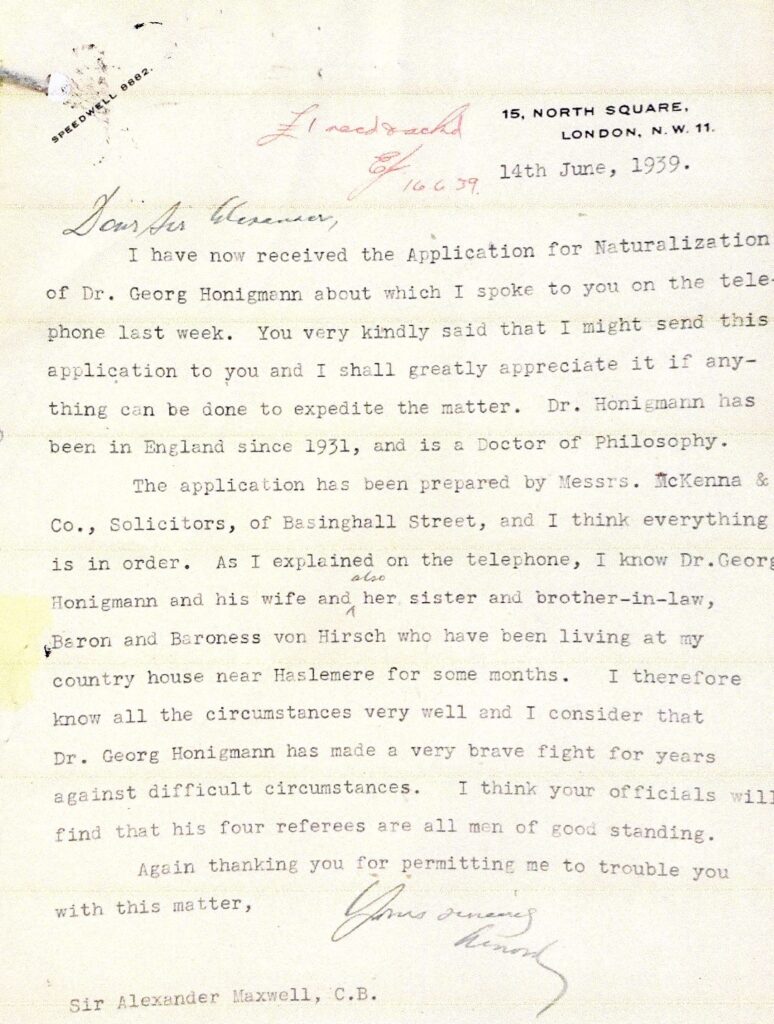
The ingenious sleuth Phil Tomaselli was able to inform me that the author of the letter was Sydney Arnold, 1st Baron Hale, formerly both a Liberal and Labour MP and a one-time Paymaster General (see https://en.wikipedia.org/wiki/Sydney_Arnold,_1st_Baron_Arnold). Furthermore, in Sept 1939 the von Hirsches were staying with Arnold at Marley Corner [maybe Marley Manor?], Haslemere: the host rather mysteriously described himself as ‘a retired stockbroker’. What is striking about this relationship is that Arnold was a noted appeaser who had been a co-signatory of a letter to the Times advocating conciliation with Hitler.
Honigmann gained fresh championing of his cause to be released from travel restrictions, including the ever-present de Courcy, on December 1, 1939. But then the clamp-down of May 1940, when the Fifth Column scare was loudly trumpeted, ensured that both Georg and Ruth were interned as members of Class ‘B’, the order being issued on May 26, with the process itself occurring on June 13. On July 4, Honigmann sailed to Canada on the S.S. Sobieski, while Ruth remained on the Isle of Man in Port Erin. Almost immediately, pleas were made on his behalf. On July 19 MI5 informed the Home Office that nothing justified his release, but Sir Charles Peake of the Exchange Telegraph soon started to apply pressure, which was reinforced by the Ministry of Information. The Ministry identified several other journalists whose ‘release is regarded as in the national interest’ including Fritz Kessler and Ernest Meyer. In a report compiled by the Exchange Telegraph, the relationship between the service and the Ministry was clearly outlined:
Since the outbreak of the war, the Continental Dept. of the Exchange Telegraph Co. have to a growing extent cooperated with the Foreign Publicity Dept of the MOI with the result that they have now completely sub-ordinated themselves to the MOI and are virtually acting as one of the Ministry’s direct publicity channels in neutral countries.
The outcome was that a decision to release Honigmann was made on September 23, and a request to do so was sent to the High Commissioner for Canada (in London) on October 11. He wrote a letter agreeing to the decision on November 6, but because of an unexplained delay Honigmann did not land in Liverpool until January 11. A Home Office letter to his solicitors, written as late as December 20, states that ‘it has been decided to bring G. Honigmann back from Canada’. His wife was also affected: a strong testimony to her loyalty to Britain was communicated by prominent names at the Manchester Guardian, but unfortunately, a bureaucratic mix-up contributed to Ruth’s still being held at the time of her husband’s arrival. Georg had to write a letter of appeal: she was interviewed on January 24, and declared that she wanted to go back and live with her husband again. Her release order was issued on February 3, and she and Georg were reunited at the flat of Ruth’s mother at 2 Hillsleigh Road, London W.8.
What of the remaining section? It seems that MI5 had approached the Home Office in February 1953, sending some information that caused the file to be given a higher secrecy rating. This fresh initiative was surely prompted by the recent arrest for questioning of Georg and Litzi in Berlin, since KV 6/114 records that it was decided on February 19 that Honigmann would not be allowed back in the UK. (This occurred after J. D. Robertson, maybe unwisely, had suggested to MI6 that overtures should be made to the disgraced Honigmanns with a view possibly to bringing them back to the UK so that MI5 could learn more about Soviet espionage. Unsurprisingly, this idea apparently did not go far.) The file thereafter underwent a review process around every seven years. A letter that month from Chief Inspector C.P. J. Ruck to the Immigration Officer appears to articulate a concern that Honigmann might visit the UK some time soon. It requests that his ‘UK address, and particulars of foreign visas and documents of interest, arrival and departure’ should be obtained ‘discreetly’ and sent to MI5. As supplementary evidence, Honigmann’s application for a new military Certificate of Identity, dated April 11, 1946, is enclosed: Honigmann stated that he might plan to return to the UK ‘if occasion arises’.
A note dated February 19, 1960 indicates that the file has been reviewed, that the present classification should remain, and that MI5 should be approached again in another seven years. Part of the message to ‘Box 500’ (MI5) of March 3, 1967 has been redacted: a week later, a note echoes the process (with some acceleration), indicating that the ‘Almanack’ should be reviewed on February 25, 1970. On that date, MI5 is again consulted to determine whether the ‘S.C. No. 18465’ has to be retained. A further, more substantial, segment has been redacted, and another, on February 25, 1974. On that date a Mr Anderson notes to Miss Spencer: “Honigmann is no longer listed in the Directory of S.I.F.O.s. Perhaps you could discover if Box 500 still have an interest in this man.”
What ‘SIFO’ stands for I have no idea (Suspect Index for Observation?), but it is clearly a file of suspicious persons of some sort. Spencer further writes, on August 22, 1974: ‘Have you any recent information on this man or comments on the cancellation of the suspect circular for him?”. And the saga continues – more reviews, more redacted segments, until a stamp on October 4, 1977 boldly declares: Deleted from Suspect Index’. What is also clear is that, in June 1965, Honigmann’s file had been amended from ‘Secret’ to ‘Confidential’.
The last few pages concern the May 1960 application for an entry visa for Honigmann’s daughter, Barbara, aged 11, who has been invited to stay with her father’s friends, the Newmarks, in Tring for four weeks. The Home Office can see no reason why it should not be granted. It is specified that her parents will not travel, but what is remarkable is the fact that her mother, Litzy Honigmann, is never mentioned in the exchanges. The visa was granted, Barbara arrived, and MI5 presumably breathed a sigh of relief when she returned to East Germany, and they had avoided having to deal with her two notorious parents. It seems that the planned retention period of a hundred years (2060) was probably coincidental to Barbara’s visit, however.
Analysis
Two primary questions occupy me: ‘Why was Honigmann’s application for naturalization refused in 1938?’ and ‘What prompted the consternation in February 1953?’. Both questions may, of course, be directly related to the initial decisions to maintain his file as ‘Secret’, and then ‘Confidential’. Considering them might help contribute to a better understanding of his status, and the alarm it caused.
The rejection by the Home Office is very strange. Honigmann appears to have all the qualities that an applicant should display: he is cultivated, urbane, manifestly anti-Nazi, and has sophisticated and respectable allies and sponsors who testify to his merits. The fact that this list includes both the right-wing de Courcy as well as the leftist Smollett might suggest that he was an intellectual of some independence of mind. On the other hand, Smollett (who had first arrived in Britain as Peter Smolka in 1930) successfully applied for naturalization in 1938, upon which event he changed his name. Yet Smolka had been expelled from France as a spy, was known to have voiced communist opinions, had travelled to the Soviet Union twice during the 1930s, and published a book sympathetic to the Soviet regime.
Honigmann was overtly rejected because he had ‘not yet sufficiently identified himself with this country’, even though the Metropolitan Police gave him a positive assessment of his loyalty, and MI5 harbored no objections. By 1938, ‘anti-fascism’ rather than ‘anti-communism’ would have been a more acceptable ideology. He apparently did not carry himself well in his interview, but it is difficult to see how he could have spoiled his chances unless he had been very clumsy. Did the Home Office have access to other information that might have disqualified him? After all, the rejections occurred before all the subversive incidents catalogued above occurred, and he was considered reliable enough to be offered the position by the Control Commission in 1946. Thus it seems unlikely that he had been identified by the Foreign Office as a dangerous subversive: Smolka (agent ABO of the NKVD) had been constantly surveilled and his correspondence intercepted, yet managed to evade any intense scrutiny when he pursued a similar path.
The timing of the request from MI5 in late February 1953 for a watch to be kept on Honigmann’s possible entry to the UK is exquisite. Georg and Litzi had just been released from prison in a Stalin-directed purge of Jews and agents who might have come under ‘bourgeois’ influence abroad. When MI5 learned about this from the press, they might have imagined that the couple would seek to flee back to the UK. (The fact that the DDR would have denied them that capability would have eluded the Security Service.) If they did so, any number of awkward secrets might be revealed. The file suggests that Honigmann’s papers would have entitled him to return: he had declared a possible intention in 1946 when he submitted his application. Yet KV 6/114 (ser 84a.) of February 19 clearly states that Honigmann would not be allowed to return: “Please inform P.C.O. [Passport Control Officer: alias for MI6 representative] Germany/Austria that the above should not be granted a visa to enter the United Kingdom without reference to this office”. On the other hand, Ruck’s message to the Immigration Officer requests information to be telephoned to MI5 ‘on arrival or departure’, as if the objective of prohibition were unenforceable.
It is not clear whether Litzi’s passport was still valid in 1953. It will be recalled that she had gained a renewal in the summer of 1946, and her status as a British subject would not have been annulled simply because of her divorce from Kim. (KV 6/113 – Item ‘J’ – does refer to an August 1947 rumour that she might be planning a return visit to the UK.) At this stage, however, the Home Office would not have maintained a file on Litzi. They were not aware of her relationship with Georg when the latter departed in May 1946. MI5 was surely issuing the same edicts for Litzi, however, but they would have been stored in the ‘Philby’ file. Perhaps the redacted segments in HO 382/255 introduce Litzi to the Home Office’s consideration of the equation.
A few weeks later, Stalin was dead, which gave enormous breathing-space, and eventual rehabilitation, to the Honigmanns. So had the danger quickly passed? Apparently not, because of the continued moratorium on the files. MI5 was presumably still concerned about a re-appearance of the pair. But who might have been damaged by any revelations? It cannot be the Honigmanns and any offspring they had. Recall that the wording in the response to the FOI runs as follows: “We shall continue to protect such information for the personal security of the individuals involved and the national security of the United Kingdom.” MI5’s sensitivities cannot extend to concerns about two probable KGB agents, both of whom died decades ago, even if one of them might have kept an expired British passport . . .
I suspect that it is more likely that the security of certain British subjects was under consideration, and the obvious candidates were the offspring of the Kim/Aileen marriage, and their successors. It is undeniable that the first three children were born out of wedlock, and Aileen was pregnant with their fourth when the wedding ceremony took place in September 1946. If Litzi had confided to Georg that a divorce from Kim had not actually taken place (as Cave-Brown and Easton claimed), that would have made Kim a bigamist, and cast a shadow over his innocent descendants. Moreover, it would have caused a real black eye for MI6, who presumably had no evidence of the divorce proceedings, found the sequence of events as implausible as I have, and wanted to shut the whole matter up – until 2060, by which time anyone would presumably have lost interest. Are there any other theories out there?
Conclusion
Honigmann remains a mystery. Why was the KGB so interested in him? He was neither an influential propagandist, nor did he have the opportunity to gain access to secret material. He openly displayed his pro-communist leanings in his associations with the Kulturbund, and he was presumably approved to take on the role of Litzi’s lover and confidant. Maybe it was because of his essential blandness that he fell beneath the radar screen, and was chosen to keep an eye on Litzi. Yet his absence in East Berlin in the summer of 1946, while Litzi remained in Britain, inviolate and relaxed, must constitute one of the oddest aspects of the Philby affair. In the hope that it might reveal a lot more, I ordered Barbara Honigmann’s memoir of her father, titled simply Georg. It arrived towards the end of the month, and I have now read it. It is beautifully written, exploiting both MI5 and STASI files, as well as what Georg communicated to his daughter both orally and in writing. It does indeed contain some fascinating insights, and it will cause some dramatic changes to be made to my conclusions above – unless, of course, Georg was not telling the truth . . . I shall report fully in a couple of months’ time.
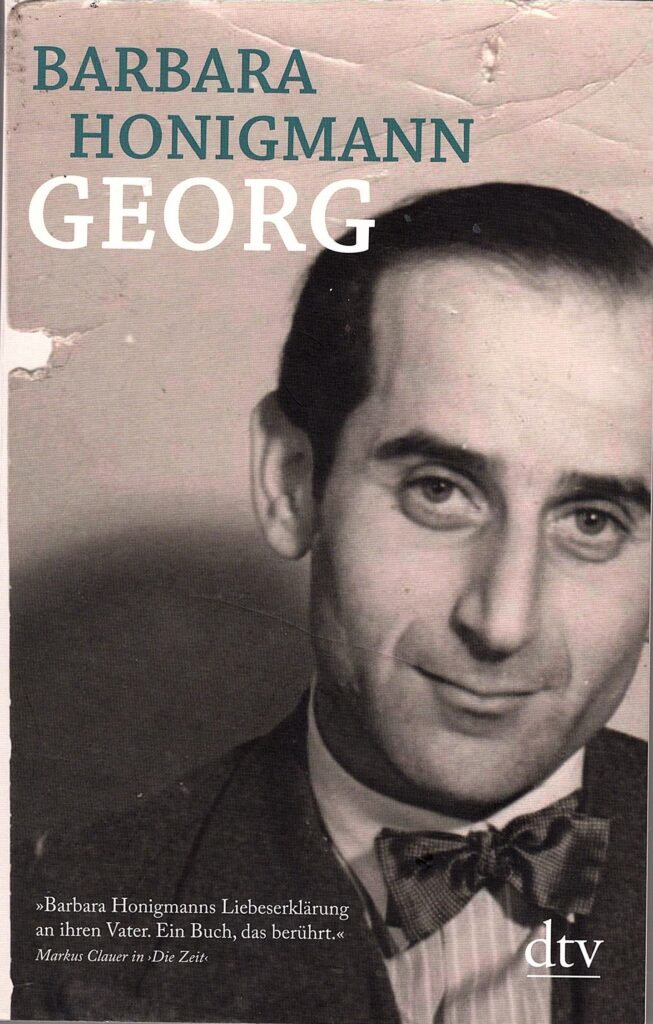
(Latest Commonplace entries can be seen here.)


